Matador Network's Blog, page 1033
August 15, 2019
Oldest city in every state in the US

“Old” is kind of a relative term. This both applies to children who refer to people in their 20s as “old” and to Americans who refer to anything built before World War II as “old.” Our country is pretty young, by global standards, but even though we may not have been around for millennia, every state has at least one city that’s been around for over 150 years.
That lends itself to some pretty fascinating history, so the folks at Netcredit did some digging and found the oldest city in each state. For these purposes, we mean oldest in terms of European settlement, as we know Native Americans have been living in these places for far longer. But all that, and a little bit about how each place was founded and developed, makes for an educational and entertaining look at some of the oldest cities in the United States.
Alabama: Mobile
Est. 1702
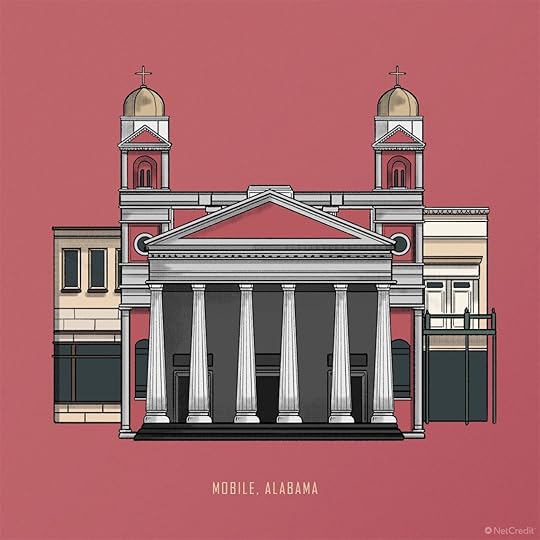
Photo: Netcredit
Few people know this port city that joins the Mobile River to the Gulf of Mexico dates back nearly 75 years prior to the founding of the United States. But in its day, it was second only to New Orleans as a major regional port and was once home to the same cast of characters that make the Big Easy so interesting. Mobile even had its own dialect called Mobile Jargon, a sort of patios of French and Native American languages.
Alaska: Kodiak
Est. 1792
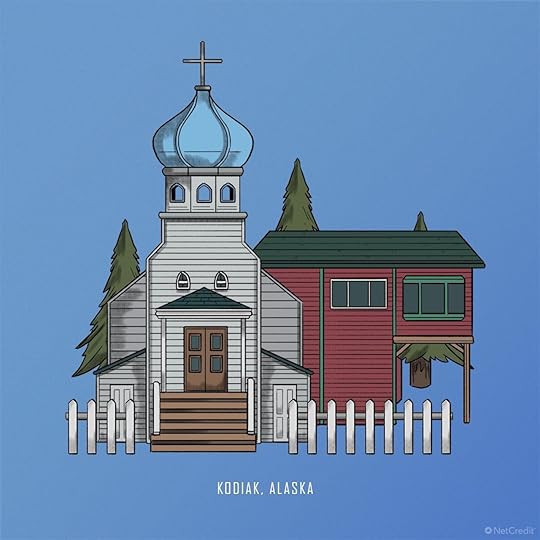
Photo: Netcredit
You think living on an island in the middle of the Gulf of Alaska is hard now? Try in the 18th century when stuff like “waterproof jackets” and “heat” weren’t really a thing. This was when Russian fur trappers established a settlement on the island of Kadiak (Inuit for “island’), which had seen Inuit habitation for nearly 8,000 years. It was the capital of Russian Alaska, then later was incorporated as a US city in 1940. Sea otter furs have been replaced by commercial fishing, and the city is now one of the most valuable fishing ports in America.
Arizona: Tucson
Est. 1775
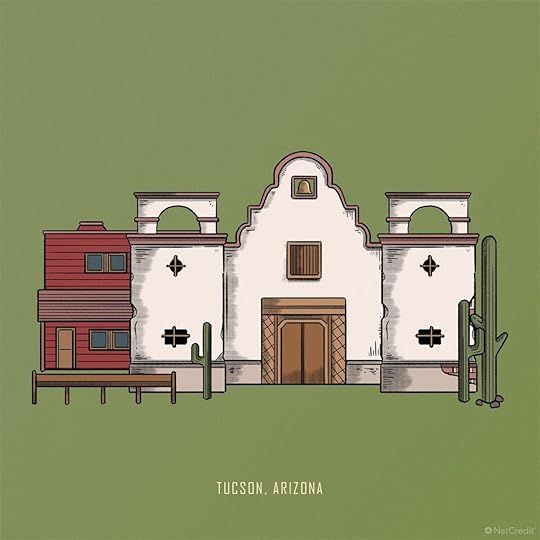
Photo: Netcredit
Though the city was officially established on August 20, 1775, Native American tribes had been living in the area for thousands of years before Spanish missionaries arrived, making Tucson one of the oldest continuously inhabited areas in North America. In the 1600s, the Presidio San Agustin de Tucson and the Mission San Xavier del Bac were established, beginning European occupation. It became part of the United States in 1854 and was a Wild West outpost well into the 19th century.
Arkansas: Georgetown
Est. 1789

Photo: Netcredit
The oldest continuously inhabited settlement in Arkansas traces its roots back to 1789, when Francis Francure arrived on the banks of the White River with a 1,361-acre land grant from the Spanish crown. It was known as Francure Township until 1909 when three men — all named George — bought and redeveloped the land. It resulted in a venerable population explosion and the newly named Georgetown now boasts 124 people.
California: San Diego
Est. 1769
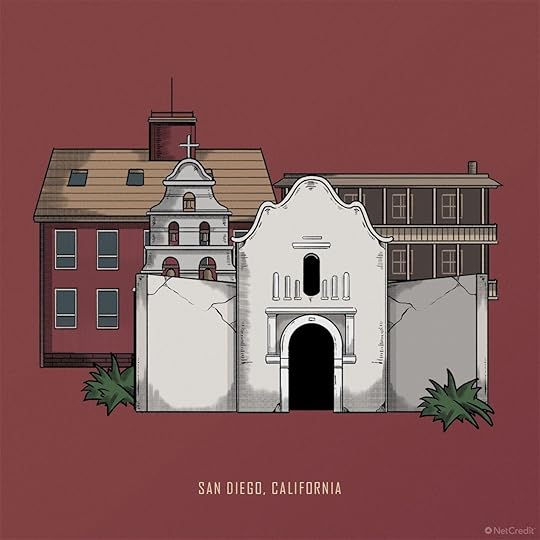
Photo: Netcredit
The native peoples known as the San Dieguito occupied this area as early ay 9000 BC, but it was in 1542 that Spanish explorer Juan Rodriquez Cabrillo first set foot here. In the 1700s, Spain reluctantly colonized the area, using San Diego as a midpoint between the southern tip of Baja California and Monterey Bay. In 1769, Junipero Serra founded the first of his 21 missions here — San Diego de Alcala — but it wasn’t until 1847 that it became part of the United States after the Mexican-American war.
Delaware: Lewes
Est. 1631
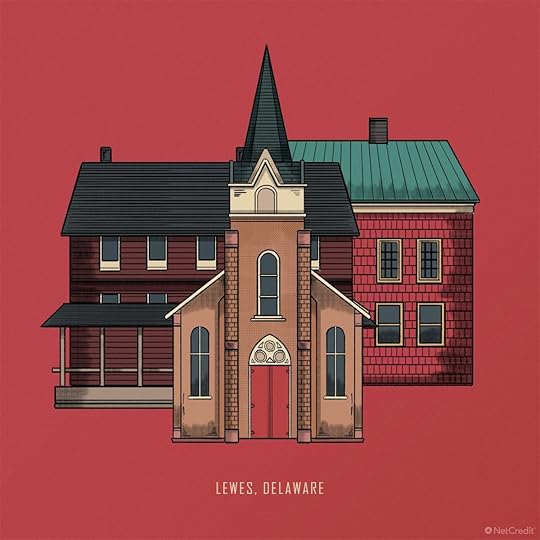
Photo: Netcredit
The oldest city in the first state was discovered by Henry Hudson on a voyage up the Delaware River in 1609. Nearly 22 years passed before the Dutch settled the area, and a year later the settlement was wiped out by a tribe of Lenni Lenape Indians in a dispute over a stolen coat of arms. The town roared back in 1658 then welcomed a Mennonite colony in 1663. That was destroyed by the English, who subsequently established the town of Whorekill. Knowing that name might someday have a slightly serial-killer-y connotation, the name was changed to Lewes in 1664, and the town still boasts buildings that date back to the seventeenth century.
Florida: St. Augustine
Est. 1565

Photo: Netcredit
Anyone who’s played three weeks of bar trivia knows this city in northwest Florida is the oldest in the US. Unexpected, in a state best known for rampant condominiums, but a fun trivia question all the same. The settlement was originally founded by Don Pedro Menéndez de Avilés, and save for about 20 years of English rule, it was a Spanish holding until the US took over in 1821. It was heavily attacked for its strategic importance by the French, English, and native tribes, which is why it’s also home to the Castillo de San Marcos, the oldest masonry fort in the contiguous United States.
Georgia: Savannah
Est. 1733
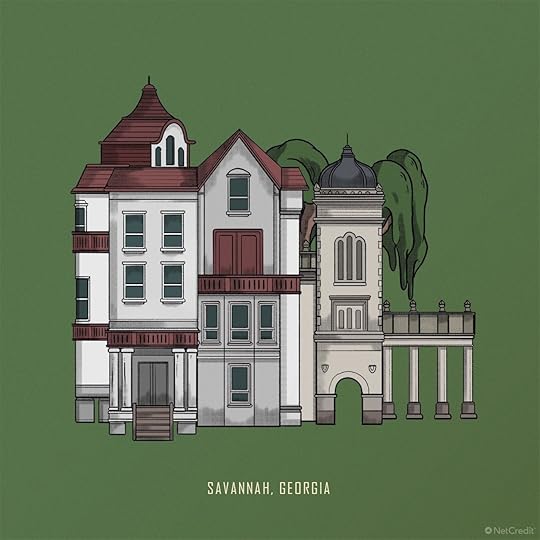
Photo: Netcredit
It wasn’t until the railroads came in that Atlanta saw its rise and became the most important city in Georgia. Before that, this port city along the Savannah River was king, settled by General James “Ogie” Oglethorpe and 120 others when they landed on a bluff over the river. It was the first city in the new colony of Georgia, and the first planned city in America with a meticulous system of grids and squares that exists to this day.
Hawaii: Hilo
Est. 1822

Photo: Netcredit
Those who haven’t ventured to the northeast side of the Big Island will be surprised to find a downtown full of buildings that date back over 100 years and homes from the 19th century. Polynesian natives have been here since about 1100, but the missionaries who arrived in 1822 were the first European settlers. They were followed by whaling and trade ships who used Hilo as the major port to the islands. And later by tourists who came to see the island’s active volcanoes, who still arrive by the boatload today.
Idaho: Franklin
Est. 1860

Photo: Netcredit
Interestingly, the oldest town in Idaho was thought to actually be part of Utah until 1872, when a land survey found it to be squarely within Gem State lines. The small settlement of Mormon pioneers along the Cub River was an agricultural community at the time, then later a launching point for carriages on their way to Yellowstone National Park. Visiting today, you can still find original stone buildings like Relic Hall, the ZCMI Stone, and the Hatch House. Its population at the last census was 643.
Illinois: Peoria
Est. 1680
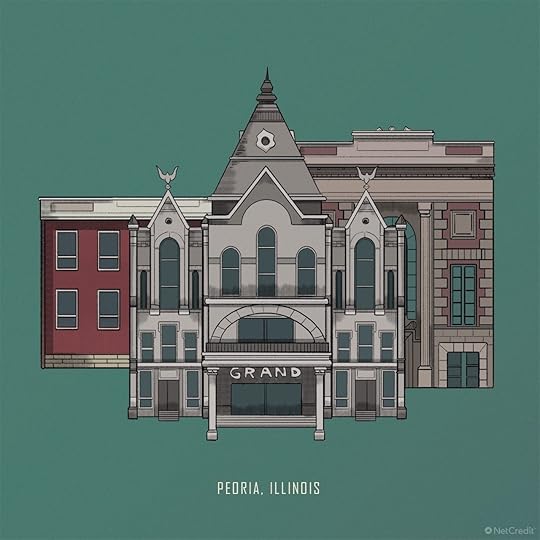
Photo: Netcredit
According to archeological finds, human habitation here dates back as far as 10,000 BC, and the Illini Indians had settlements as late as 1650. In 1763, Father Jacques Marquette and Louis Joliet explored the area, and in 1680, Robert Cavalier Sieur de LaSalle and Henri de Tonti constructed Fort Crevecoeur on the east bank of the Illinois River. It was largely under French control until the War of 1812, when the village was burned by American forces and the French inhabitants were taken prisoner and moved. In 1845, Peoria was officially incorporated as an American city.
Indiana: Vincennes
Est. 1732
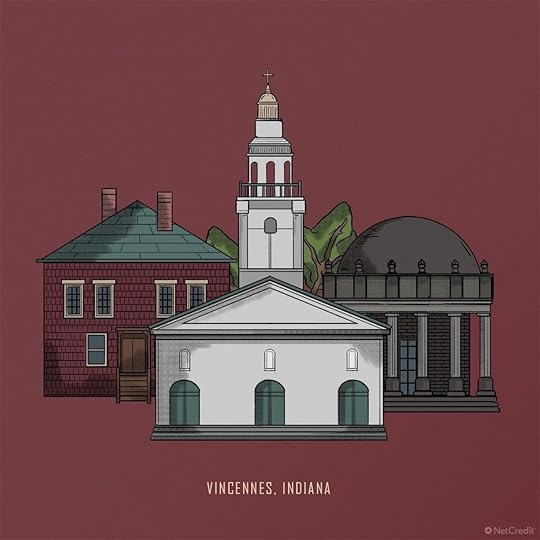
Photo: Netcredit
Originally founded as a military outpost to protect the French fur trade along the Wabash River, Vincennes was actually the original capital of the Indiana Territory when it was established in 1800. It is also the home of Indiana’s first Catholic church, newspaper, Masonic lodge, Presbyterian church, bank, and medical office.
Iowa: Dubuque
Est. 1837

Photo: Netcredit
One of the oldest settlements west of the Mississippi, Dubuque was originally settled by French-Canadian fur trader Julien Dubuque. He made a liaison with the local Mesquakie tribes, who showed him where massive lead deposits sat nearby. Together they mined the area known as the Mines of Spain until Dubuque died in 1810. The US government then opened the area to settlement, and it officially became the city of Dubuque in 1837.
Kansas: Leavenworth
Est. 1827

Photo: Netcredit
Fort Leavenworth was established along the Missouri River in 1827 to protect the local fur trade and other commercial interests along the Santa Fe trail. It’s still the oldest Army post west of the Mississippi and has had an illustrious history as everything from the base of operations for wars against natives to the home of the black regiments who became known as “Buffalo Soldiers.”
Kentucky: Harrodsburg
Est. 1774
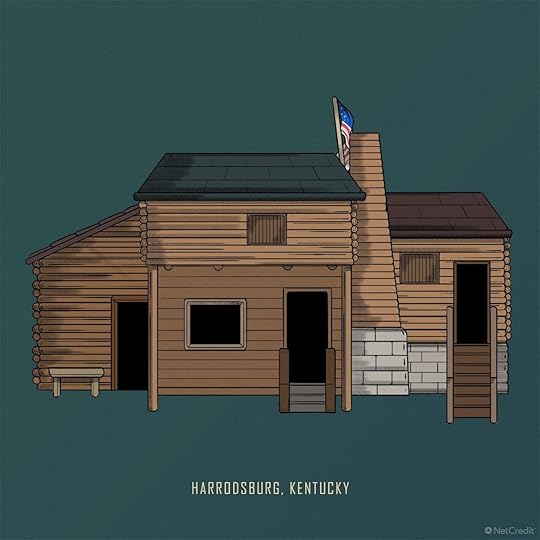
Photo: Netcredit
This town near the Salt and Kentucky rivers isn’t just the oldest town in the Bluegrass State — it’s also the oldest English settlement west of the Allegheny Mountains. It was once a crucial conduit between settlements in the East and West and still maintains a downtown with buildings from the late 19th century.
Louisiana: Natchitoches
Est. 1714

Photo: Netcredit
This area was originally settled along the banks of the Red River by a native tribe of the same name. The French first colonized it for Europeans in 1714 as an outpost for watching its nearby holdings, but eventually the river changed course and the city now sits on what’s known as Cane River Lake. The 33-block downtown is still choc-full of historic homes, many of which have similar architecture to what you’d find in nearby New Orleans.
Maine: Kittery
Est. 1623

Photo: Netcredit
What began as a pastoral town for English settlers from Kingswear became one of the most important cities for the US Navy during its early years. Many warships used during the Revolutionary War were built here, and in 1800, it opened the Portsmouth Naval Shipyard, the oldest continuously operating Navy yard in America. Many of the submarines used to win World War II were also built in Kittery, and it continues to produce nuclear subs today.
Maryland: Annapolis
Est. 1649
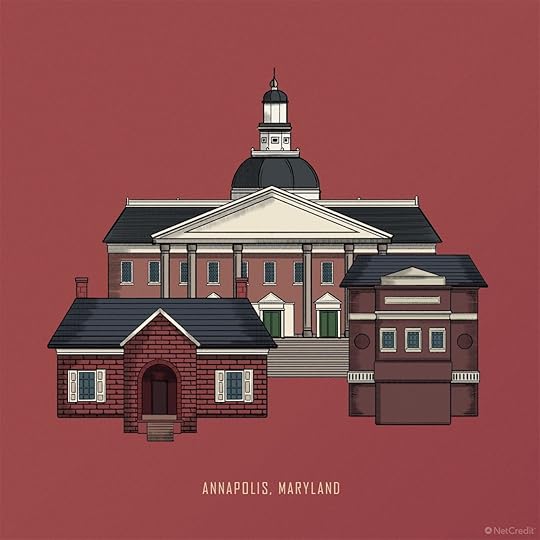
Photo: Netcredit
The recreational sailing capital of the world was originally founded in 1649 by Puritans who’d been kicked out of Virginia. It went through a series of names before landing on Annapolis to honor Queen Anne in 1694. The city was home to the Annapolis Convention, generally considered the precursor to the Constitutional Convention, in 1786, and was selected as the site for the US Naval Academy the following year.
Massachusetts: Plymouth
Est. 1620
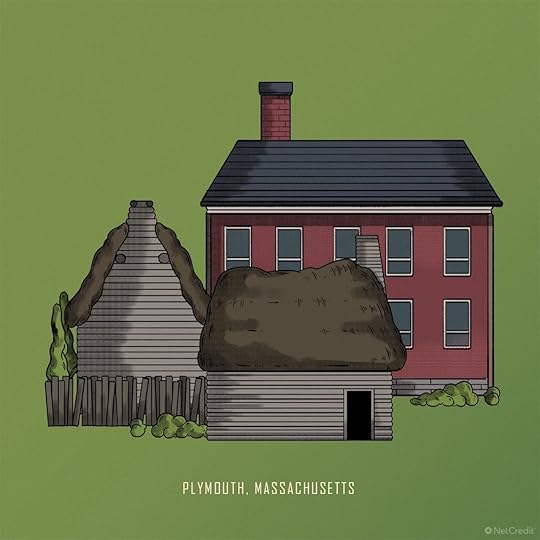
Photo: Netcredit
If you know the story of Thanksgiving, you know all about Plymouth Rock and the pilgrims who first landed there. What many don’t know is they were originally aiming much further south to Virginia, where they’d acquired plantation land. Bad weather forced a landing in far-less-hospitable Massachusetts, and nearly half the already malnourished settlers didn’t survive the first winter. Today it’s a city of over 58,000, and you can visit the allegedly famous “rock” at Pilgrim Memorial State Park.
Michigan: Sault Ste. Marie
Est. 1641
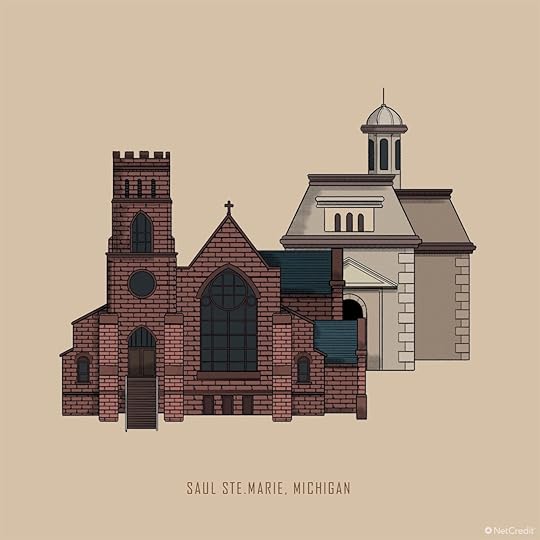
Photo: Netcredit
“The Soo,” as it’s known, was initially settled by natives along the St. Mary’s river, as the abundance of fish traveling between Lake Superior and Lake Huron made it prime fishing territory. In the 1600s, French explorers came to the area, and in 1668, missionary Jacques Marquette named it Sault Ste. Marie after the Virgin Mary. Over the next 150 years the British and French fought over the strategically crucial outpost until it was finally turned over to US control in 1820.
Minnesota: Wabasha
Est. 1826

Photo: Netcredit
Mostly inhabited by the Sioux prior to 1820, this town in the Mississippi River Valley began to explode with settlers in the mid-19th century. Farmers, lumberman, and river traders were among its earliest inhabitants, and later it became an important city for clamming. It retains much of its old river town charm and may have inspired the setting for Grumpy Old Men as the film’s writer had a grandfather who lived here.
Mississippi: Natchez
Est. 1716

Photo: Netcredit
The grand old plantation homes and thick southern charm of this city on the bluffs above the Mississippi are mostly from its heyday as a slave trade post in the 19th century. But the city itself was founded by the French over 100 years earlier, as Ft. Rosalie by Jean Baptiste Le Moyne de Bienville. It was later renamed Natchez — after the local natives who sacked the fort in 1729 — and stood under English then Spanish control until the US made it the capital of the Mississippi Territory in 1798.
Missouri: St. Genevieve
Est. 1735
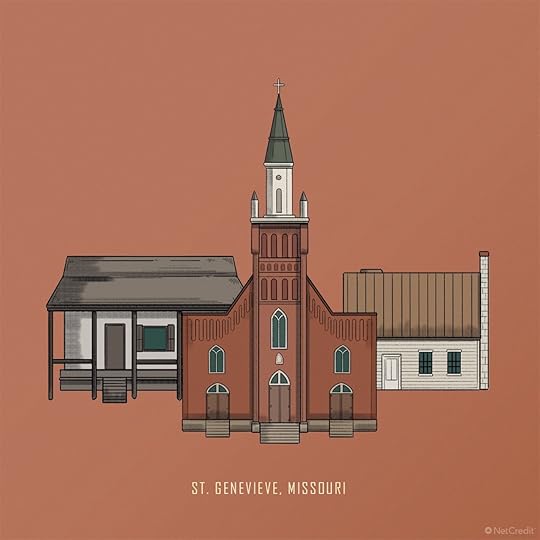
Photo: Netcredit
The French originally settled this area to exploit the nearby salt springs in Saline Creek. As agricultural needs became larger, St. Genevieve became a rich growing area with deposits from the Mississippi River. The town moved locations in 1785 after massive flooding, now standing at a higher elevation than its original riverside locale. It was again threatened in the early 1990s, but during both the floods of 1993 and 1995, emergency levees saved the city’s historic structures.
Montana: Stevensville
Est. 1841
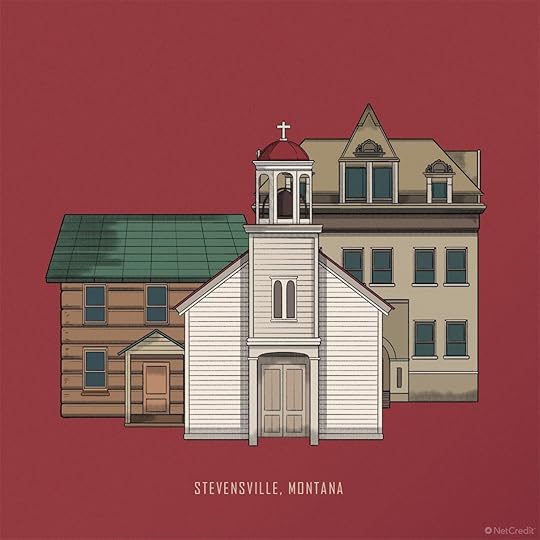
Photo: Netcredit
Stevensville was once the big open lands of the Bitterroot Valley, where the Salish tribe lived for centuries and ultimately helped Lewis and Clark find trails to take them further west. The Salish learned of Jesuit missionaries who could teach them skills like farming and medicine, and invited them to come settle in the early 19th century. The Jesuits established a mission here in 1841, and as other settlers followed, the Salish abandoned the area. It fell into relative disrepair until after the Civil War, when it became the Fort Owen trading post, a hub of expansion during the era of western migration.
Nebraska: Bellevue
Est. 1822
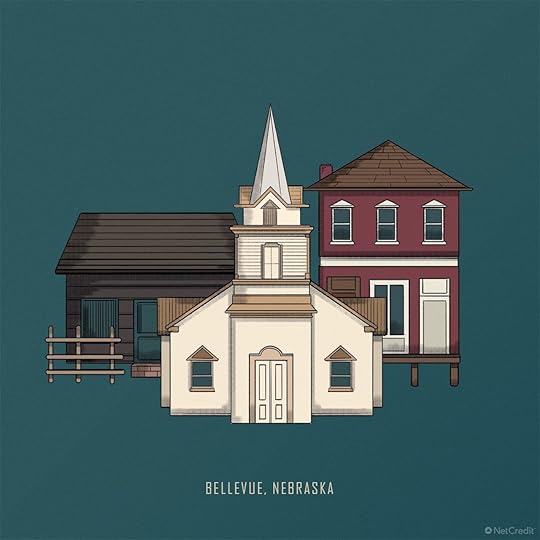
Photo: Netcredit
Named “beautiful view” for its clifftop vistas over the Missouri River, Bellevue was, like many Midwestern river cities, a fur trading post initially settled by the French. It later became the site of Ft. Crook thanks to the availability of large swaths of land, then later evolved into Offutt Air Force Base. The base is home to the Martin Bomber Plant, who most notably manufactured the Enola Gay and Bockscar. AKA the planes that dropped atomic bombs on Hiroshima and Nagasaki.
Nevada: Genoa
Est. 1851
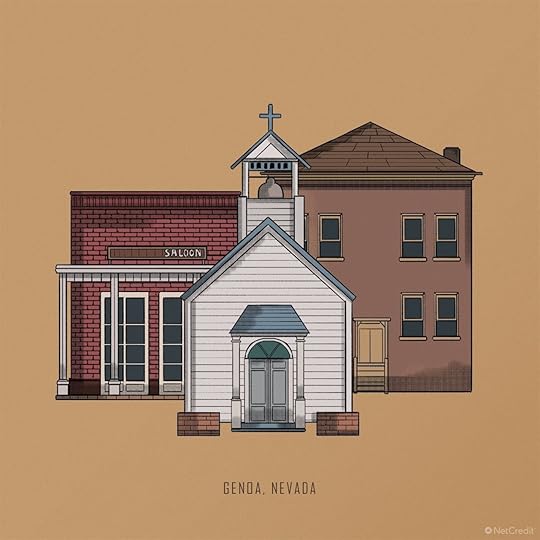
Photo: Netcredit
As the Mormons moved west from New York in the middle part of the 19th century, a group of them opted to settle in the eastern slope of the Sierra Nevada, east of Lake Tahoe. The area became known as Mormon Station, and the Overland Emigrant Trail ran right through what is Main Street in downtown Genoa. Today, it’s a full-blown Old West theme town with buildings dating back to near its original founding.
New Hampshire: Dover
Est. 1623
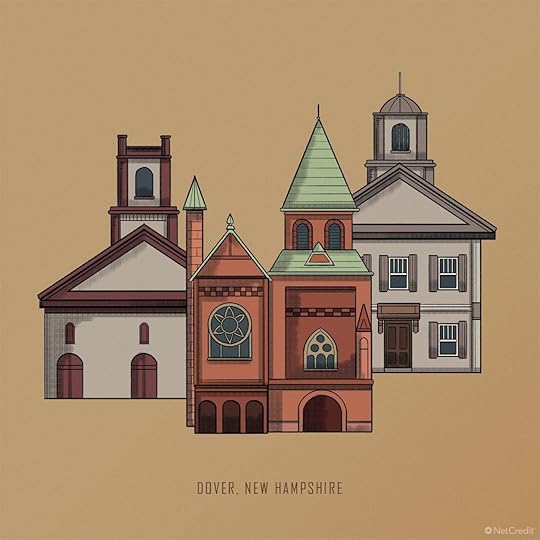
Photo: Netcredit
Dover isn’t just the oldest settlement in New Hampshire — it was initially its own separate colony called Northam until joining the Massachusetts Bay Colony in 1692. The town between the Cocheco and Bellamy Rivers used the waters to fuel its economy, first by powering a sawmill in 1642, then developing a shipbuilding industry in the 18th century. Dover evolved into a brick-manufacturing town in the 1900s, and today, at just over 29,000 residents, it’s the fourth-largest city in the state.
New Jersey: Jersey City
Est. 1660
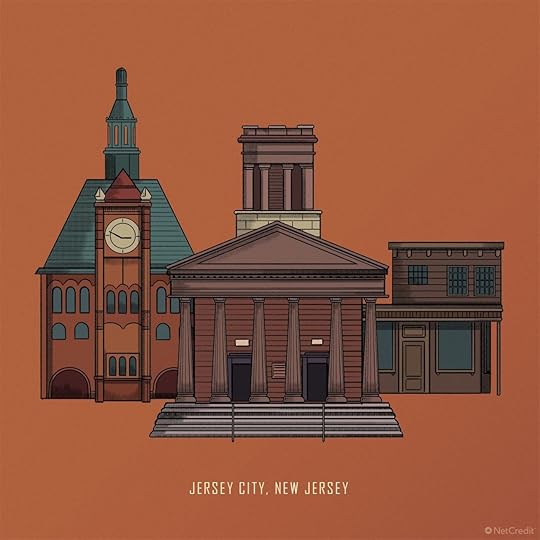
Photo: Netcredit
Though most people wouldn’t associate the word “historical” with this city just across the Hudson from NYC, it was, in fact, the first European settlement in the area that is now New Jersey. Delaware Indians had been there for centuries, but Henry Hudson happened upon it in 1609, and Dutch fur trappers settled there in 1618. It grew to become a major center for both transportation and communications and now boasts some of the best views of the Manhattan skyline.
New Mexico: Santa Fe
Est. 1607

Photo: Netcredit
Even trivia buffs are often unaware that the second-oldest city in America is the adobe-and-art gem of Santa Fe. Originally settled by Fanciscan missionaries, the town is home to the oldest church building in America at the San Miguel Churchf. Ultimately, the local Pueblo Indians revolted against the Spanish, burning nearly everything to the ground save for the still-standing Palace of the Governors. Once the capital of the vast Spanish empire in the Southwest, it’s still the state capital of New Mexico and a highly underrated spot for late-season skiing.
New York: Albany
Est. 1624

Photo: Netcredit
Enjoy tearing off that toilet paper with a conveniently perforated edge? Thank the city of Albany, whose favorite son Seth Wheeler patented the toilet paper roll in 1871. That fun fact aside, the Empire State capital is also the oldest city in the state, founded as Henry Hudson looked for a waterway to the far East in 1609. Fur traders set up the first European settlement in 1614, and it became the state capital in 1797.
North Carolina: Bath
Est. 1705
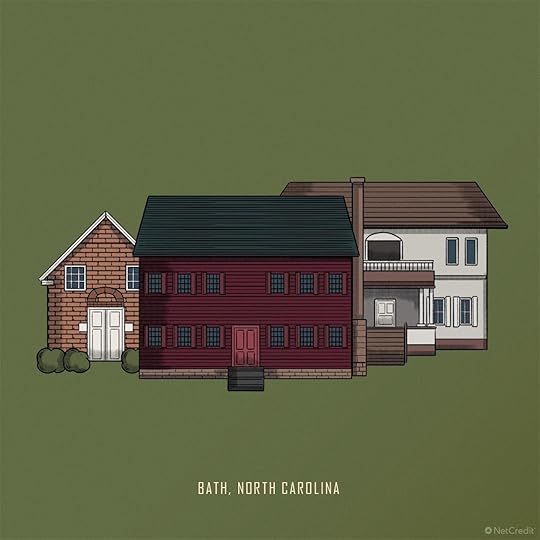
Photo: Netcredit
Theoretically, a port city only 50 miles from the Atlantic Ocean and smack on the Pamlico River would be an ideal place for Protestant settlers relocating from Virginia. That is, of course, until one considers that the Tuscarora Indians, who occupied the area and outnumbered the settlers considerably, might not be so hot on the idea. And that pirates like the infamous Edward “Blackbeard” Teach roamed the ocean nearby. Thus was the fate of Bath, which never really got its feet off the ground as a major settlement and 314 years after its founding has only a population of 244.
North Dakota: Pembina
Est. 1797
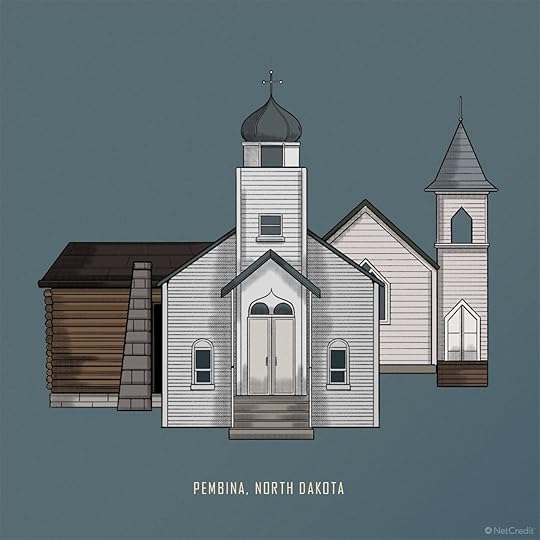
Photo: Netcredit
Pembina began as a community of “Metis,” mixed-race people that were the result of relations between French explorers and the local Chippewa. It wasn’t until 1797 when French trader Charles Baptiste Chaboillez established a post here that the population began to grow, and in 1803, the Hudson Bay Company opened its own post in Pembina. The town sits about two miles from the US-Canadian border, and in the 19th century, it was a fairly wide-open trading area between America and British-controlled Canada. Today, it has a population of about 550.
Ohio: Marietta
Est. 1788

Photo: Netcredit
Ohio’s first city was also the first American settlement northwest of the Ohio River, initially settled by Rufus Putnam — an early investor in the Ohio Company. In its early years, Marietta was an agricultural trading center, collecting goods from nearby farms and sending them east. Later, it became known for shipbuilding, dispatching its creations down the Ohio River to the Mississippi. As other modes of transportation grew, Marietta shrank in importance and housed just over 15,000 people in the last census.
Oklahoma: Fort Gibson
Est. 1824

Photo: Netcredit
Fort Gibson was initially established as a sort of refuge for European settlers, freed slaves, and Cherokees against the Osage Indians. Later, it served as a jumping-off point for military operations exploring the West and was the Union Army headquarters in Indian Territory during the Civil War. Though the fort itself was abandoned in the late 19th century, much of it was rebuilt by the WPA in the 1930s, and the town boasted over 4,000 residents during the last census.
Oregon: Astoria
Est. 1811

Photo: Netcredit
Clatsop Indians occupied this peninsula near the mouth of the Columbia River for hundreds of years until Captain Robert Gary first sailed through in 1792. Fort Clatsop was established just south of the area and housed Lewis and Clark during the winter of 1805. A few years later, America’s first millionaire John Jacob Astor set up a fur trading post and gave the city its name. It regained fame in the 1980s, when the cult classic Goonies used Astoria as its locale.
Pennsylvania: Philadelphia
Est. 1681
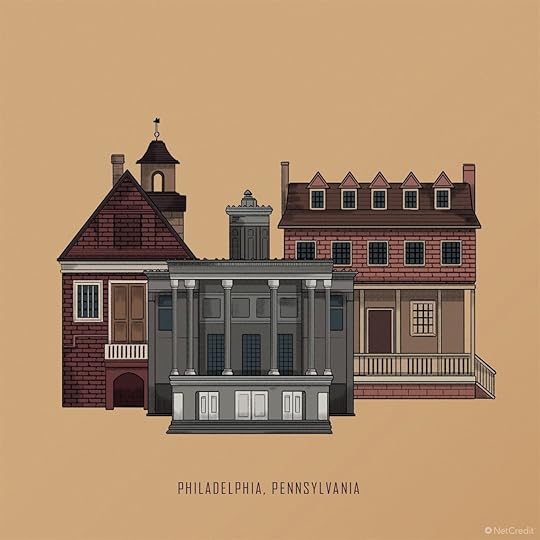
Photo: Netcredit
You may have noticed most of the oldest cities in America are nowhere near the largest in their respective states. Not the case in Phillyhttps://matadornetwork.com/destinatio..., which was the most important city in America during the country’s early years. The city was founded by William Penn after King Charles II gifted him the province of Pennsylvania. It drew large numbers of new immigrants with its reputation for religious tolerance and “brotherly love,” and it grew into a major trading center with the West Indies. It was the largest city in America until overtaken by New York in 1790 and was the second-largest until Chicago passed it in 1890.
Rhode Island: Providence
Est. 1636

Photo: Netcredit
It should come as no surprise that one of America’s best party cities was founded by a preacher who didn’t play by anyone else’s rules. Roger Williams was forced out of Massachusetts in 1636 and fled to Narragansett Indian land, which he then purchased and named “Providence” as a thanks to God for his protection. The city grew into a major supplier for the French and American armies during the revolution and still remains one of the most important seaports in New England.
South Carolina: Charleston
Est. 1670
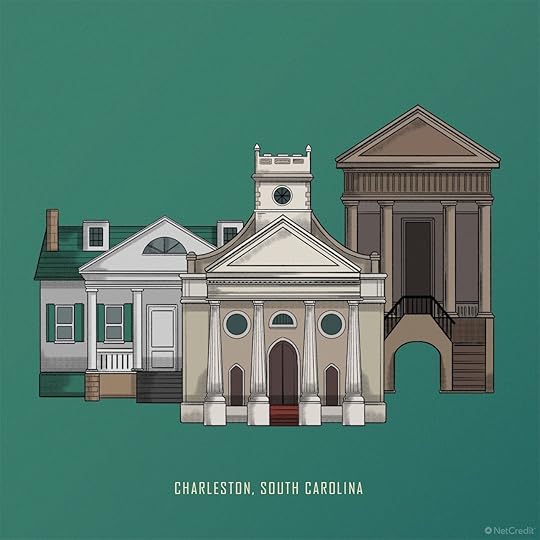
Photo: Netcredit
Nowhere in the south meant more to American history than Charleston. And though tourists flock there today for its southern hospitality and carriage rides, it has not always been so tranquil. Blackbeard the pirate blockaded the city in 1718 — it was the site of the Civil War’s beginning at Fort Sumter in 1861, and a few months later, a fire destroyed much of the city. Even so, it’s still the site of America’s first golf course at the Charleston Golf Club and the nation’s first museum at the Charleston Museum.
South Dakota: Fort Pierre
Est. 1743
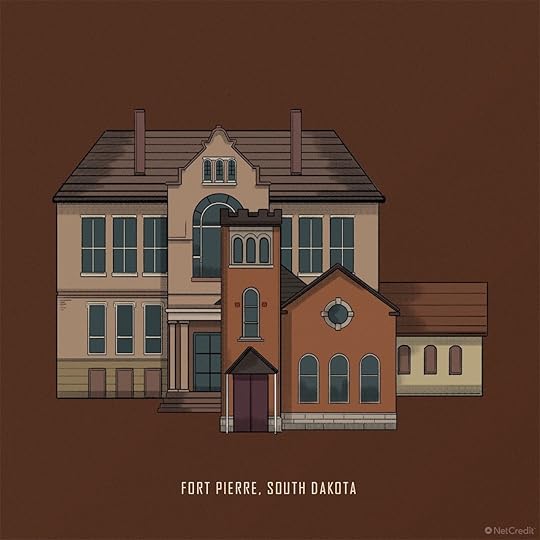
Photo: Netcredit
Before you read any further, please note “Pierre,” in this case, is pronounced like “pier.” Now that you’re saying it right in your head, you can appreciate the historical significance of this city across the Missouri River from the South Dakota state capitol. This Lakota land was first explored by French Verendrye explorers who stuck a metal plate in the hill claiming the land for France. It turned into a major trading center at the confluence of the Bad and Missouri Rivers, and in true South Dakota style grew as a diverse, mostly lawless place where people came to make a quick buck.
Tennessee: Jonesborough
Est. 1779
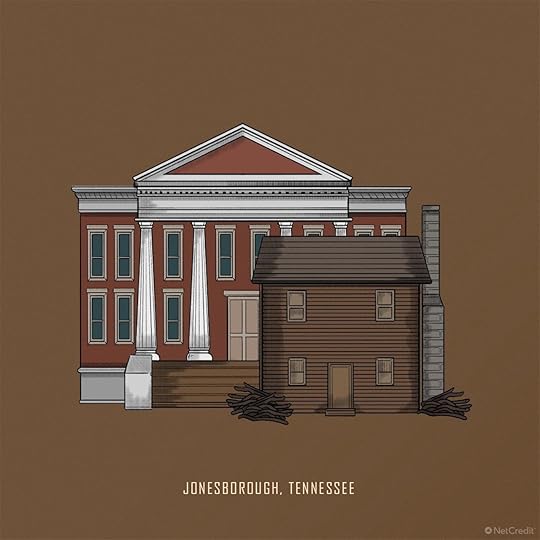
Photo: Netcredit
Think you know you US capitals? Ok, smarty pants, what was the capital of the 14th state of Franklin? What, you’ve never heard of the area of western North Carolina that, in 1784, felt it wasn’t being effectively represented and formed its own state? Well, that happened, and though it was never officially recognized by congress Franklin — the unofficial 14th state — had its capital in Jonesborough. The land later became part of Tennessee when it was admitted as the 16th state and still has many of the buildings from its unofficial-capital era.
Texas: Nacogdoches
Est. 1779

Photo: Netcredit
Oh, you’ve flown under six flags, Texas? That’s cute. But this city manages to out-Texas Texas, going even bigger and flying under a whopping NINE flags in its 240-year history. If you can name them all without Googling, stop wasting your time reading and go try out for Jeopardy! If you can’t, they are: Spanish, French, Gutierrez-Magee Rebellion, Dr. James Long Expedition, Mexican, Fredonian Rebellion, Lone Star, Confederate, and the United States.
Utah: Ogden
Est. 1851
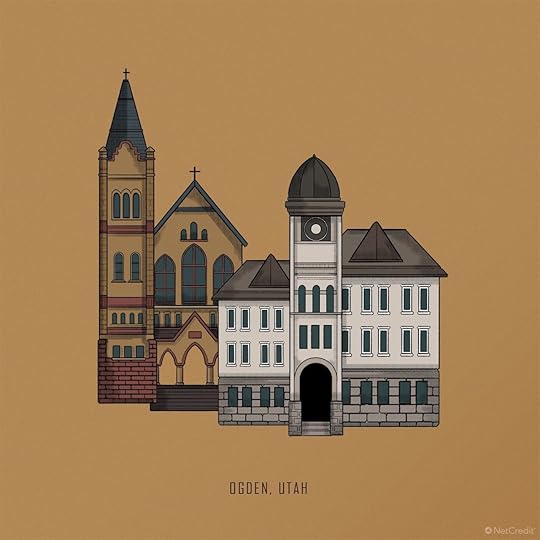
Photo: Netcredit
Hard to imagine the heart of Mormon country being one of the great outlaw towns of the 19th century. But as Ogden was home to the junction of the Union Pacific and Central Pacific railroads, it turned into possibly the world’s first stopover town where people came to do whatever they pleased for a night. The bars, brothels, and gambling houses along 25th Street made it one of the roughest neighborhoods in the country. Much of those buildings still stand today, and Ogden has turned into a laid-back, historic ski alternative to crowded Park City.
Vermont: Westminster
Est. 1734

Photo: Netcredit
When the Massachusetts Bay Company was establishing settlements in its massive holdings, the area that is now Westminster was “Township No. 1.” It was part of the New Hampshire Grants until 1762, when King George decreed the Connecticut River would separate New Hampshire and New York, and Westminster became part of the Empire State. Its county courthouse was the site of Vermont’s decision to be a free and separate republic in 1777, which it was until it ultimately became the 14th state in 1791. Westminster was also home of Vermont’s first state bank, established in 1807.
Virginia: Williamsburg
Est. 1633
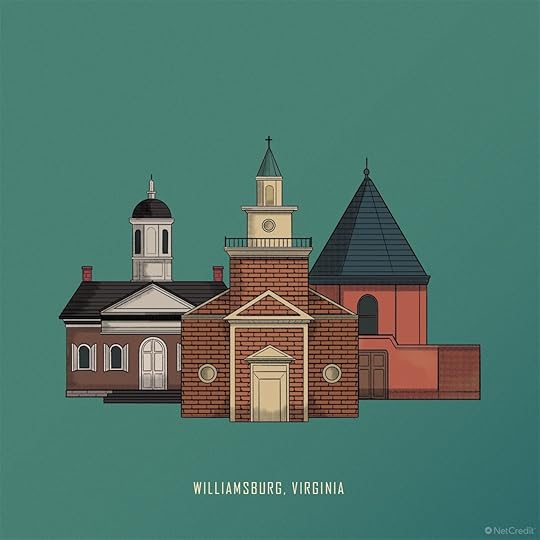
Photo: Netcredit
Some might be surprised to see that Williamsburg, not Jamestown, is the oldest city in Virginia. Those people would forget that while America’s first settlement was, in fact, in Jamestown, that city was destroyed by fire in 1698, and left too small to be anything resembling a town. Most of Virginia’s government and commerce moved to Middle Plantation, which was renamed Williamsburg. Jamestown is now a national park.
Washington: Steilacoom
Est. 1854

Photo: Netcredit
Before Seattle and Tacoma dominated Puget Sound, there was Steilacoom. This city in the south sound was named after the native tribe who inhabited the area, settled mostly by former British sailors. As the first settlement in the lumber-rich Washington Territory, Steilacoom’s founders sought to make it a new San Francisco and a major trading port with the rest of the West Coast. But the Civil War halted its growth, and by the end of the century, the railroad terminus in Tacoma and the gold rush in Seattle made those the major cities in the state.
West Virginia: Shepherdstown
Est. 1762
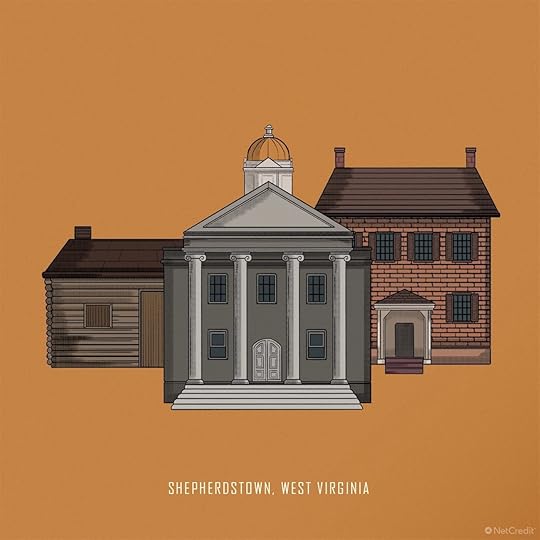
Photo: Netcredit
The name Shepherdstown has absolutely nothing to do with sheep, but rather with Thomas Shepherd who began the city on 222 acres on the southern banks of the Potomac River. Its convenient location at the northern part of the Shenandoah Valley made it a popular stopping point for travelers and its early days saw it as a hotbed of taverns, bars, and inns. It was later a convalescing point for 5,000-8,000 casualties after the Battle of Antietam, and most of the town has today been designated on the National Register of Historic Places.
Wisconsin: Green Bay
Est. 1634

Photo: Netcredit
Lost in the lore of Lambeau and America’s only publicly held pro sports team is the fact that Green Bay was at one time the world’s entrance to Wisconsin. The name comes from “La Baye Vert,” which even first-grade French students know translates to “Green Bay,” after the color of the waters explorer Jean Nicolet found upon his arrival. French fur traders and missionaries followed, calling the settlement simply “The Bay” since it was their main point of entry from the Great Lakes inland. They controlled the area until the British took it over in 1763, then 20 years later lost it to Americans after the Revolutionary War.
Wyoming: Cheyenne
Est. 1867

Photo: Netcredit
The youngest oldest city in America is cowboy-filled Cheyenne, founded as a supply depot for the Union Pacific Railroad in 1867. It gained the nickname “Magic City,” springing up out of nowhere like a 19th-century Dubai. Later, it was a major outfitting center for the Black Hills gold rush in Deadwood, and today, it has grown to the largest city in Wyoming.
If the fact that this list was alphabetized instead of in order of establishment frustrated you, good news: Netcredit also made this handy animation to visualize the cities popping up on the map as they were created. 

More like this: 11 important Native American heritage sites in the US that you need to visit
The post The oldest city in every state, mapped appeared first on Matador Network.

Best fall things to do in Whistler
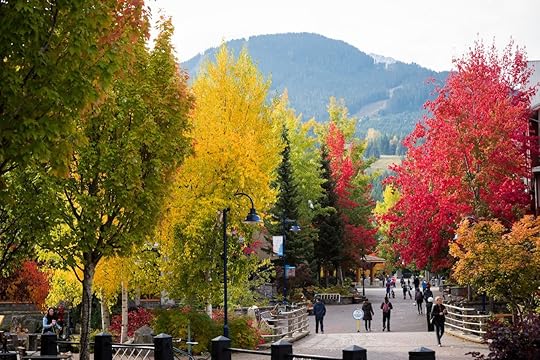
Often dwarfed by snowy winters and glorious summers, fall is arguably Whistler’s most underrated season. With the long thaw complete at the highest peaks and the first snow of winter yet to arrive, fall is the best time to explore this lovely mountain town. An explosion of reds and oranges adorns the backcountry, clear at last of summer adventurers and yet to reunite with the hoards of winter skiers. Largely seen by the locals as a time to rest and recharge, the unhurried months between the two peak seasons offer a unique perspective on British Columbia.
The best of the weather

Photo: Tourism Whistler
While there’s no denying the sheer beauty of Whistler under a thick blanket of snow, the fall months offer a respite from the extremes of weather. Temperatures in September and October are generally pleasant and comfortable, with the first snow usually arriving during mid-November. Temperatures generally range from the high 30s (Fahrenheit) to about the mid-50s, so you’ll enjoy cooler weather without the winter chill.
Hike the Fitzsimmons Nature Trail
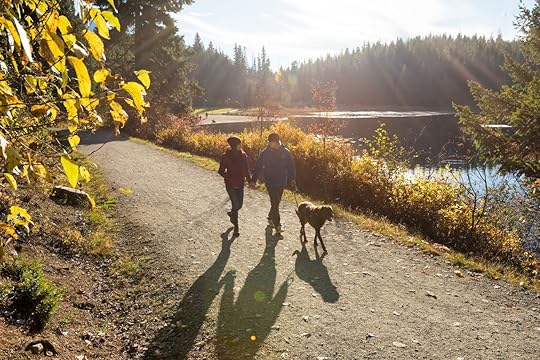
Photo: Tourism Whistler
Hikers flock to Whistler during the summer months to explore the labyrinth of trails that crisscross the mountain landscape. However, with the trails at higher elevations typically only clearing fully from snow during August, fall tends to be the most accessible time of year for hiking in Whistler.
While there’s a hike for every level of fitness, the Fitzsimmons Accessible Nature Trail is most definitely one for a sedate afternoon. The wide gravel path is perfect for strollers, wheelchairs, and gentle meandering. And, while the trail is short, there’s plenty to see. The rushing waters of Fitzsimmons Creek and the stand of giant trees are just two highlights to look out for, and you’ll weave your way through clawed trees frequented by bears as sturdy back scratchers. At the end of the hike, it’s just a short journey back to Whistler’s Olympic Plaza, where you’ll find several eateries and bars, as well as many of the main hotels.
To see some of the oldest and most beautiful trees in the valley, drive to the trailhead on Cougar Mountain before heading off on the cedar trail hike. There’s something truly relaxing about sitting among the behemoths and appreciating their size and age. Saunter by gentle waterfalls, moss-covered rocks, and imposing ancient cedars enjoying the last of the warm sunshine, ahead of another harsh Canadian winter. On your drive back into town, you can stop on the way at Nicklaus North for a pint on the patio and some hearty food to refuel.
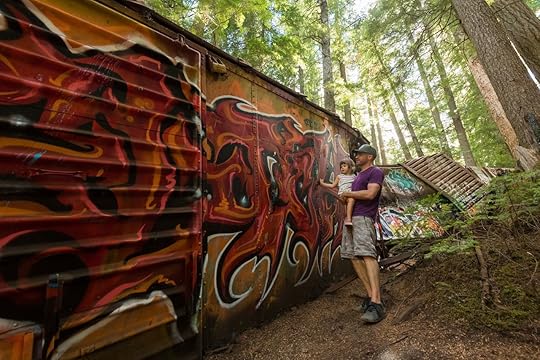
Photo: Tourism Whistler
The train wreck hike is probably one of the most famous short hikes in these parts, revolving around a set of abandoned rail cars turned art installation. Each carriage is beautifully decorated by local artists, and the colors and designs change frequently. Getting to the start of the hike is easy — just ride a bike or take the bus to the Cheakamus Crossing south of Whistler. Once you’re done, you’ll be right across from Function Junction, a neighbourhood full of cafes, restaurants, and local breweries. You could grab a beer and a bite there at the Whistler Brewing Company.
Bike around Lost Lake Park
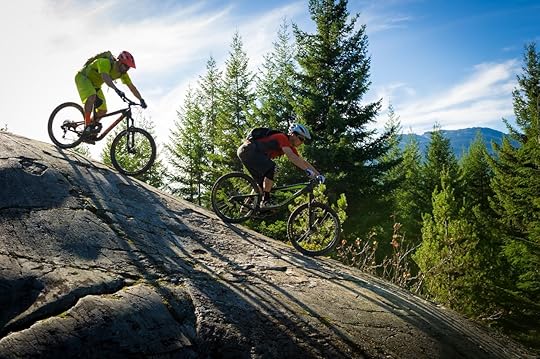
Photo: Tourism Whistler
Biking in Whistler is another popular summer pastime that’s even better during fall. Just five minutes of peddling from the heart of Whistler Village takes you to the tranquil setting of Lost Lake Park. Before heading out to Whistler’s 150 miles of singletrack trails, get a feel for the terrain and cross-country characteristics of the region right here. The exhilarating Lost Lake Loop takes in mini landmarks, including Tin Pants, Fountain of Love, and Pinocchio’s Furniture.
To see some of the best Whistler views by bike, head for the Cheakamus Lake Trail. Access the trail by starting at the Cheakamus Crossing about five miles south of Whistler. Ride along the riverside trails to the suspension bridge where you’ll find the trailhead. The easy-to-navigate trails are well maintained here and are generally quieter during the fall months. The trail, which is shared by hikers, generally takes between two to six hours to navigate. Eventually, the trail comes to a dead end with the stunning lake views sprawled out in front. Bring lunch and enjoy one of the most scenic picnic spots in British Columbia.
Get the adrenaline pumping
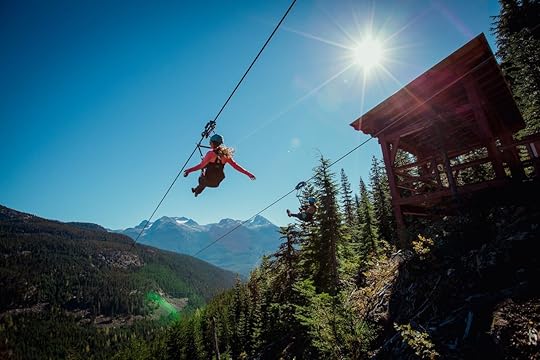
Photo: The Adventure Group
For something a little more fast-paced, hire a two- or four-seater RZR and hurtle through the mud and puddles on a very invigorating Whistler tour. RZR tours leave at multiple times throughout the day. Whether you take the wheel or sit back and be a passenger, this is one unique mode of transport.
You could also ride along the canopy on Superfly Ziplines, where you’ll get a birds-eye view for visitors from the safety of a harness. You can ride side by side with a friend but on your own cable. Zip-lining runs year-round in Whistler, but fall offers some spectacular views.
Unleash your inner lumberjack
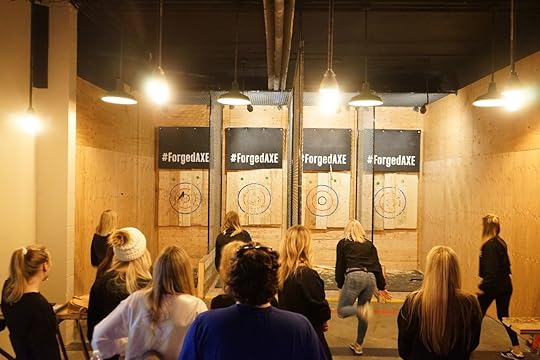
Photo: Forged Axe Throwing
As you hike or bike through the Whistler forests, let the chopping of timber for winter fuel or smokey fire bellowing from a woodland clearing remind you of British Columbia’s lumberjack past. During gruelling logging stints, skilled lumberjacks found entertainment by hurling axes at targets, testing their aim and competing against their fellow woodsmen. Today, this timber sport and pastime actually has global and national governing bodies.
While you might not find lumberjacks throwing axes in the forest, Forged Axe Throwing is keeping this quintessentially Canadian activity thriving at its base in Function Junction. The former industrial neighbourhood lends itself perfectly to this raucous pastime. Partying bachelorettes throw alongside corporate groups, all seeking the satisfaction of sinking an oh-so-satisfying bullseye. Being an indoor activity, axe throwing is one to keep on the list for those rainy fall afternoons.
Walk the Vallea Lumina
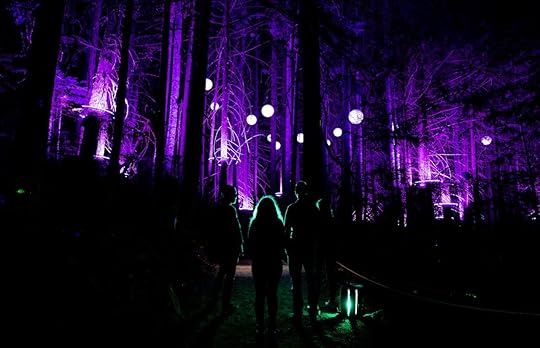
Photo: The Adventure Group
Whistler’s newest attraction, the Vallea Lumina, comes alive in the fall. In the forested surrounds of Cougar Mountain, this multimedia night walk follows the story of two long-ago hikers and supposedly wondrous things that happened near Whistler — all intended to confirm the legends about this place are true. The darker nights provide the perfect opportunity to head off in pursuit of hidden wonders and let your inner child run free.
Enjoy Whistler history and culture
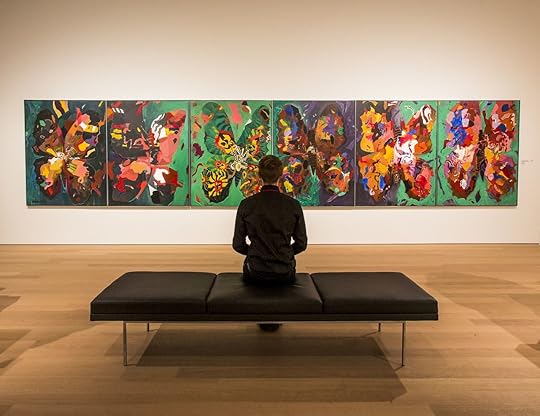
Photo: Justa Jeskova/Tourism Whistler
Fall in Whistler is taken at a chiller pace, with cultural activities and festivals in lieu of high-speed, downhilling sports. The Audain Art Museum is Whistler’s newest cultural hotspot, and the building houses a permanent collection of artworks from around the world. The impressive collection includes 19th-century masks from First Nations people of the Northwest Coast.
The Whistler Museum is also worth a visit to learn more about the history of the area and its mountain culture. Exhibits include historical photos and displays, as well as an original gondola cabin, which was a world away from today’s health and safety conscious designs.
Spend Canadian Thanksgiving on the Whistler Wine Walk

Photo: Tourism Whistler
Canadian Thanksgiving is the perfect time to visit Whistler and join in the laid-back celebrations. Taking place this year on the weekend of October 11-14, there’s plenty of family-friendly options to choose from. You can have a hearty turkey dinner before heading off to a spa to rejuvenate. Or you can get the best deals on snow gear at the legendary Whistler Blackcomb Turkey Sale.
In October’s Whistler Wine Walk, you can check out Whistler’s bustling gallery scene while sampling hors d’oeuvres and wines from BC wineries every Friday night in October. Each week, four public and private galleries offer a new taste of Whistler’s eclectic cultural mix — with local, regional, and international artists, as well as interactive art experiences.
Hit up the top fall festivals
Whistler Beer Festival (September 9-15)
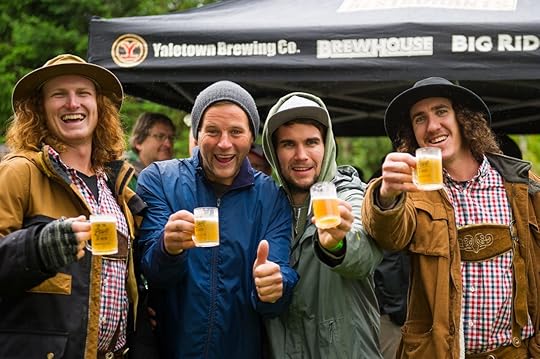
Photo: Tourism Whistler
The Whistler Beer Festival is a fun combination of fresh mountain air, live music, and, of course, beer. This seven-day festival traditionally marks the start of fall, and you don’t need to be a beer drinker to enjoy it. Tasting events, beer battles, cask nights, and plenty of great food should be expected in a celebration of over 140 beers and ciders from 70 distinct breweries.
One of the festival’s headline events, Craft Cultures, takes place at the Audain Art Museum. It’s a swanky evening with mouth-watering bites and brews celebrating the sea, land, and sky. On the Friday, Master Crafters holds a blind taste test competition at the Longhorn Saloon. Attendees sample unidentified hazy beers throughout the evening before casting their vote for their favorite; the very best brew is crowned at the end of the evening. Oh, and there’s beer yoga too.
Whistler Writers Festival (October 17-20)

Photo: Tourism Whistler
Now in its 18th year, the Whistler Writers Festival continues to grow in size and strength and is a must-attend for avid readers, aspiring writers, and published authors alike. While books are of course at the heart of the event, the festival incorporates evenings with food, music, and stories, as well as a busy workshop timetable.
Attendees can meet and interact with more than 70 authors, publishers, and guest presenters in a fairly intimate setting. It’s a particularly inspiring event for those looking to write themselves. There’s something about listening to your favorite author tell a story at one of the reading events as fall leaves blow outside on a chilly wind. You can also take a walk to Lost Lake with your favorite authors, a tradition at the event, or pitch face-to-face for a chance to get your work published.
Cornucopia (November 7-17)
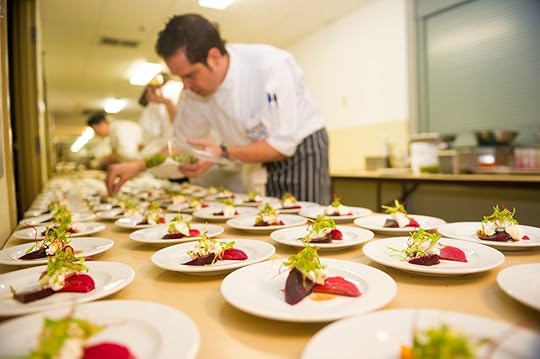
Photo: Tourism Whistler
The Cornucopia Festival is one of the last fall events, marking the end of a successful season with the ultimate ode to local food and drink. The festival has won “Best Wine Festival/Event” in Vancouver’s Georgia Straight Golden Plates awards two years in a row. For 11 days, Cornucopia offers an unforgettable culinary experience with tastings, winery dinners, and meet-the-chef events.
The event brings together the very best chefs, winemakers, and producers to celebrate British Columbia’s food offerings. Locals describe the event as where the wild meets the refined, and in many ways, that’s true. Top-notch local produce is transformed into colorful, flavor-filled creations served at intimate dinners, buzzing tasting events, and chef table luncheons. A health and wellness focus has been added in recent years, catering to those looking to eat and live well. Electric afterparties are the perfect place to dance the night away after you’ve sipped and sampled the day away. 

More like this: 18 ways to save money on your Whistler ski trip
The post Why the fall season is Whistler’s best-kept secret appeared first on Matador Network.

The best way to see Peru’s Laguna 69

As we ascended the trail toward the basecamp below Nevado Pisco, the hundreds of hikers heading to Peru’s Laguna 69 continued to grow smaller. Large granite monoliths covered in cracked glaciers loomed ahead, beckoning for us to keep moving forward. With each step in the high altitude our breaths grew shallower, but the increasing beauty of the surrounding landscape and the promise of discovering the unknown was enough for us to maintain our motivation.
Situated at an elevation of 14,700 feet above sea level and set against a backdrop of the glaciated and dramatic summit of the Chacraraju (itself a startling 19,688 feet high), Laguna 69 is one of the most frequented glacial alpine lakes in Peru. Its name, which just means “Lake 69,” comes from a numbered list of unnamed lakes written by authorities during the creation of Huascarán National Park.
While many easily complete the hike as a day trip from Huaraz, my climbing partners and I decided to take a lesser-traveled path, breaking the day hike into an overnight backpacking trip.
When we arrived at Refugio Perù — the basecamp for climbers looking to bag ascents of larger mountaineering objectives like Nevado Pisco — we found ourselves surrounded by a panoramic view of some of the largest peaks in South America. And since it was October, which starts the shoulder season for climbing, we had it all to ourselves.
After setting up camp and wandering around, searching for the best vantage point to admire the surrounding peaks, we ended the evening with instant mac and cheese, a few cans of tuna, and tea. We rose the next morning before the sun, using our headlamps to follow cairns up and over a 16,000-foot ridge.
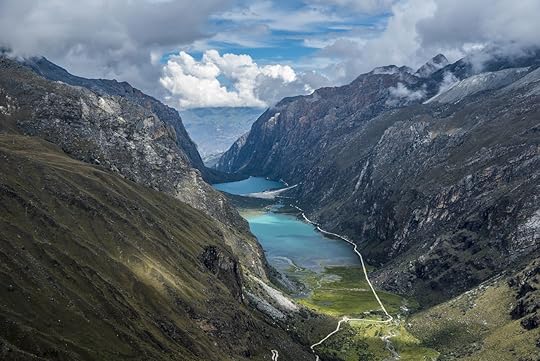
Photo: Peto Laszlo/Shutterstock
We reached the pinnacle as the sun rose above the horizon, offering a magnificent display from what seemed to be the top of the world. From here, the descent to the lake would begin.
Laguna 69 was desolate when we arrived, an experience rarely matched at such a popular destination. We descended from above, catching the first glimpse of the turquoise water surrounded by dramatic cliffs around 7:00 AM. “I think that’s it!” I cheered as it came into view.
We spent an hour at the lake, enjoying the solitude and beauty, eating snacks, and even enduring a short snow shower. On the way down, the scene was much different than it had been over the last 24 hours. Busloads of hikers made their way up the standard trail toward the lake, hoping to catch a view from amongst the crowds. We got back to the trailhead as the last stragglers were starting the hike up.
Although adventurous, experiencing Laguna 69 in a similar way is an attainable goal. With a bit of ambition, the proper gear, and basic backpacking skills, anyone can do it.
Getting there
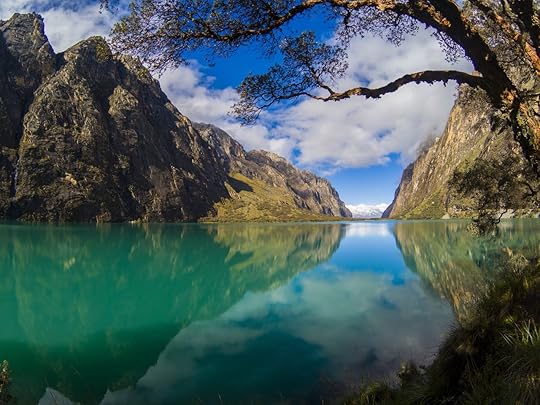
Photo: Peto Laszlo/Shutterstock
Like most Peruvian adventures, a trip to Laguna 69 begins in Lima. From Lima, there are a number of bus companies that offer service to Huaraz, the jumping-off point to the Cordillera Blanca, which is the major mountain range in the region. The bus ride from Lima to Huaraz is about eight hours, so if you’re on a time crunch, consider taking an overnight bus. Companies like Cruz del Sur and Oltursa are both reputable.
Once in Huaraz, an endless amount of tour companies advertise day trips to Laguna 69. If you are looking to do the trip as an overnight, as we did, coordinate a pick-up time with the company of your choosing. For the most adventurous, it’s also possible to catch a taxi back to Huaraz the following day. But this takes a lot of patience, time, and a potential adventure from town to town before making it back to the city.
Where to stay
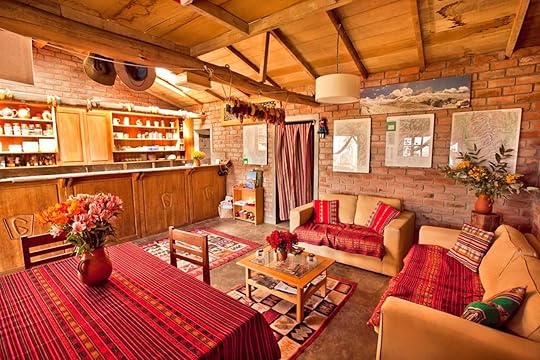
Photo: Llanganuco Mountain Lodge/Facebook
Refugio Perù, located at over 15,000 feet above sea level, is a strenuous three-hour hike from the trailhead and offers 80 beds, a restaurant, heating, and hot water between June and September. Although the refuge is geared largely toward mountaineers hoping to summit one of the higher peaks surrounding it, it makes for a great place to spend the night before continuing to Laguna 69. If you plan on completing the hike outside of the refuge’s months of operation, you can camp near the building.
In Huaraz, there is no shortage of lodging options. While the Monkeywasi backpackers hostel focuses on climbers (it even has an indoor bouldering wall), it’s a great place to meet other outdoor enthusiasts, save money, and spend your off-days hanging out. The Llanganuco Mountain Lodge is one of the more popular high-end lodging options in the city, but it’s still relatively affordable by US standards.
When to go

Photo: NiarKrad/Shutterstock
The dry season in the Cordillera Blanca is between June and September. Skies are often clear during the dry season, although the possibility of snow at higher elevations exists year-round. Between October and May, clear mornings are often followed by afternoon clouds and precipitation. In the spring and fall, it is more likely you’ll luck out with at least a few days that remain sunny. If visiting during the dry season, it may be a good idea to reach out in advance to check lodging availability. 

More like this: Why you should visit Huaraz, Peru’s most overlooked mountain town
The post How to have Peru’s most popular lake to yourself appeared first on Matador Network.

Philadelphians when they travel

Sitting on connecting interstates and home to a major international airport, Philadelphia is easy to get away from. While we love our fair city, there are times where we just need to get out of here — when the weather is filled with freezing rain and we haven’t seen the sun in 37 days, for example. However, when we do, strange things start to happen. Here are eight terrible things that happen to Philadelphians while traveling.
1. The people we meet immediately ask us about cheesesteaks…
Philly cheesesteaks seems to be the one and only aspect of our city that outsiders know about. It’s sad to think that a sandwich variety is seen as Philly’s greatest achievement when there’s so much more to our city and its food than that. It’s our duty to dispel myths and tell the world that the Philadelphia culinary scene is one of the best in the US.
2. … or Rocky Balboa…
Rocky is one of the best Philly movie series out there — perhaps the only truly Philly movie series out there. That said, the bronze statue in front of the Philadelphia Museum of Art gets way too much hype in comparison to the incredibly impressive collection of art that is actually inside the museum. Rocky is great, but the Philly art and culture landscape is much broader than the 1970s franchise.
3. …or New York City.
Yes, Philly is sort of near New York City. But, it’s a very different, very separate city, and we don’t take kindly to this comparison. We’re the third-largest city in the US and the birthplace of this country for your information.
4. We often need to use the New Jersey Transit system.
If we’re leaving the city by train, there’s a fair chance it’s going to be through the God awful system that is NJ Transit. There’s no telling what will happen when you board — it’s like the Wild West of train travel out there. Likely, it will involve you stumbling off, dazed, seven hours past when you were supposed to arrive at your destination.
5. A trip to the airport is full of road dangers.
The amount of crater-sized potholes lining the exit ramps to the Philadelphia airport is mind-blowing. We may know the potholes are there but that doesn’t mean we know how we’re supposed to get around them without swerving into oncoming traffic. At least you know that you’ll have company when you pull over to change your now beat-up tire.
6. We lose our minds to the gridlock of I-95 on Fridays in the summer.
Always double the amount of time you think it’s going to take to reach your destination and expect a lot of heads yelling out of car windows, fist shakings, and nervous breakdowns. Traffic on I-95 is the worst way to start a weekend getaway.
7. We censor ourselves.
It’s true that Philadelphians have a specific jargon that may not suit every situation out there or be understood by everyone in the country. It’s a tough endeavor to change how we speak but we do make some effort to communicate with the rest of the world — when we feel like it.
8. People think we’re all a-holes.
We know that our reputation in other parts of the country is not always the kindest. We’re a little rough around the edges, but give us a chance. When you get past our defensiveness and sarcasm, we’re pretty darn nice. 

More like this: 13 things you’ll never hear a friend from Philadelphia say
The post 8 terrible things that happen to Philadelphians while traveling appeared first on Matador Network.

Best live music venues Buenos Aires

Buenos Aires is regarded by Argentinians as “the city that never sleeps,” and from a musical standpoint, they have a valid point. You can catch live music across the city from Monday to Sunday, with styles ranging from urban to electronic, rock to reggae, and classical to hip-hop. Visiting these venues presents a unique opportunity to get to know Buenos Aires through its most distinctive feature, its barrios (neighborhoods). Here are some of the most interesting venues, both mainstream and underground, that the city has to offer.
Well-known cultural centers
Buenos Aires is well-known in South America and beyond for its cultural centers — or centros culturales — which are large-scale event venues offering a range of activities including live music, typically at very affordable prices. There are dozens of these venues across the city, but check out the following specifically for their musical offerings.
Ciudad Cultural Konex

Photo: CIUDAD CULTURAL KONEX/Facebook
Located in the Abasto neighborhood, Konex is marketed as a “Cultural City.” Operating from a former oil plant and storehouse originally opened in 1920, Konex specializes in the alternative arts, so expect to see a diverse range of music here that is likely to be a bit off the “mainstream” path. Its industrial post-apocalyptic design and spacious rooms make it a good place to dance and chill after a typical Buenos Aires week. Konex is popular among travelers and locals for hosting La Bomba de Tiempo, a drumming party that has taken place every Monday at 8:00 PM for the past 13 years. You should definitely experience La Bomba de Tiempo on your trip as its rapid-fire percussion sessions encapsulate the rhythmic soul of Buenos Aires perhaps better than any other ongoing event. Konex hosts other regular activities such as music festivals and drama performances.
Where: Sarmiento 3131, C1196 AAG, Abasto, Buenos Aires
Centro Cultural Recoleta

Photo: Diego Grandi/Shutterstock
Centro Cultural Recoleta towers above Buenos Aires’ posh Recoleta neighborhood. It first opened in the 1980s but has kept up with social changes to remain a hub driven by those still young enough to go out every night. Currently, it offers a wide selection of events presented by millennials and centennials. There’s live music, poetry, exhibitions, freestyle rap competitions, break dance, beatbox, ludic games, and just about anything else you’d see in a nightclub all happening in the same place and, most importantly, for free.
Where: Junín 193t0, C1113 AAX, Recoleta, Buenos Aires
Centro Cultural Kirchner

Photo: Centro Cultural Kirchner/Facebook
The Centro Cultural Kirchner is the largest cultural center in Latin America and the fourth largest in the world. Located in the former Central Post Office of Buenos Aires, its premises includes a concert hall, five auditoriums for theater and concerts, 18 halls for poetry readings and other events, 40 rooms of art and history galleries, 16 rehearsal rooms, and two rooftop terraces. The main concert hall, La Ballena Azul (The Blue Whale), is a blimp-shaped, three-story auditorium and opera house with 1,950 seats. The defining feature, though, is a German Klais Orgelbau pipe organ with over 8,000 pipes. The venue is frequently used for classical music events and piano concerts, though you’ll also see rock, blues, and Argentinian folklore shows from time to time.
Where: Sarmiento 151, C1041, San Nicolás, Buenos Aires
The real underground scene
Otra Historia Club Cultural
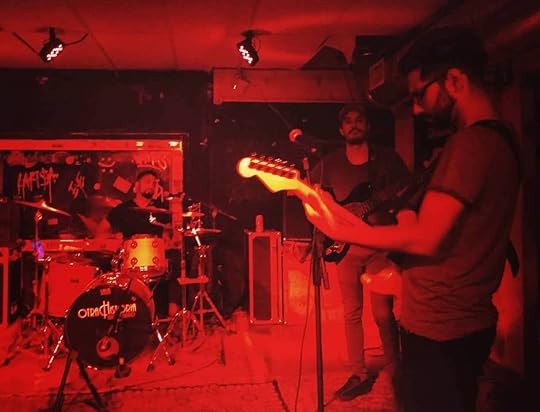
Photo: Otra Historia Club Cultural/Facebook
You will not find a place like Otra Historia anywhere else but Buenos Aires. Located in the heart of the Villa Ortuzar neighborhood, Otra Historia hosts dozens of different shows and DJs every night. Upon entering, you will come across multiple doors leading to different rooms, each with special events. Enjoy a punk rock show, a tech-house rave, or a trap party, or bounce between multiple shows. No matter which room you choose, the drinks are delightfully cheap.
Where: Estomba 851, C1427COS, Villa Ortuzar, Buenos Aires
Salón Pueyrredón

Photo: Salon Pueyrredon/Facebook
Located in the Palermo Bronx neighborhood, Salón Pueyrredón is an underground venue reminiscent of CBGB — you can experience live music for a few pesos. Historically reserved for punk and post-punk shows, it has recently become available for indie and hard rock bands. When bands aren’t on stage, DJs play vinyl usually from the ‘70s and ‘90s from a beautiful balcony overlooking Avenida Santa Fe. You can smoke a cigarette while drinking your beer or the classic Fernet Branca, to do as the club’s regulars do. Near the venue you will find 24-hour pizzerias, an ideal choice to finish up the night as porteños do.
Where: Av. Santa Fe 4560, C1425BHU, Palermo, Buenos Aires
Other places you should visit for live music in Buenos Aires
Niceto

Photo: Niceto Club/Facebook
Niceto has become one of the most popular venues in the city. It’s packed most nights but has still managed to hold on to its “hipster cool” feel, probably because many respected names in the Buenos Aires music scene have graced the stage. Located in the heart of the trendy Palermo neighborhood, Niceto is frequented by national and international artists and accommodates every musical style you can imagine. This venue is regarded by many as a must for local artists looking to make the jump from underground to mainstream. On weekends, and after midnight on other nights, you can enjoy DJs and occasional recurring parties such as Fiesta Bresh.
Where: Av. Cnel. Niceto Vega 5510, C1414 BFD, Palermo, Buenos Aires
Makena Cantina Club

Photo: Makena Cantina Club/Facebook
Makena Cantina Club is a small but lively venue for local concerts. Situated in Palermo’s prime nightlife district, musicians and bands are invited to play on the stage above the bar, one of the more unique settings for music anywhere in the city. The space in front of the bar typically becomes the dance floor, and is a good spot to work on your tango or other dance moves in a setting with plenty of alcohol. Makena Cantina Club organizes a range of different events — you’ll find everything from funk to hip-hop to soul. Don’t miss its Sunday Afromama jams, a popular event with locals that has been on for the last 14 years.
Where: Fitz Roy 1519, Palermo, Buenos Aires
La Trastienda
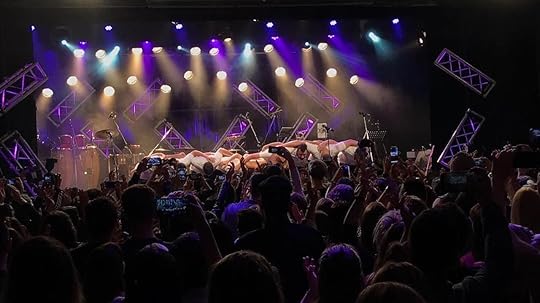
Photo: La Trastienda/Facebook
La Trastienda is located in the traditional San Telmo neighborhood and is the chosen venue of both national and international touring rock and pop artists. Big names in the South American circuit come through on a regular basis, though the majority haven’t broken into the US scene and as such, you may not be able to join the chorus of fans screaming every word. Still, the theater is beautiful and the shows are always lively, making for a great anchor to a night out in San Telmo. If you’re planning to attend a show here, you should definitely make time to visit the colorful streets, pubs, and restaurants in the surrounding area. There’s a unique feel to San Telmo that is difficult to replicate elsewhere.
Where: Balcarce 460, C1064AAJ, San Telmo, Buenos Aires
Teatro Colón

Photo: T photography/Shutterstock
If you want to listen to some classical music or an opera, Teatro Colón is the place to go. Inaugurated back at the beginning of the 20th century, this theater is one of the most important architectural works in the city, featuring the grand Golden Room inside and its masonry facade that rises above the adjacent Plaza Lavalle. The venue is renowned for its acoustics, a major reason for its recognition as the top opera house worldwide by the industry publication . Please note that El Colón — as Argentinians call it — observes a strict dress code for the concerts, so don’t show up in flip-flops and a tank top.
Where: Av. Cerrito 628, San Nicolas, Buenos Aires 

More like this: Everything you need to know about asados in Argentina
The post The best places to hear live music in Buenos Aires appeared first on Matador Network.

How to follow a keto diet traveling

As we approach the third decade of the 21st century, the ketogenic (or “keto”) diet continues to ride the crest of an increasingly fashionable food culture wave. What the ketogenic diet essentially boils down to is limiting your carbohydrate intake (aiming for lower than 50 grams a day) and sustaining yourself mostly on healthy saturated and unsaturated fats (around 75 percent of your food consumption). Protein should also not be overindulged as any excess proteins in the body will subsequently be converted into carbohydrates.
When you’re on the move, sticking to the keto diet — or any diet for that matter — isn’t always an easy feat, but with a little direction and planning, it’s usually achievable. Here are some tips on how to stay in ketosis while you’re traveling, most of which can be applied anywhere in the world.
But first, let’s take a little look at what exactly ketosis is.
Editor’s Note: Like most other trendy nutrition plans, the ketogenic diet has its own fair share of controversy and naysayers. Please consult a doctor or nutritionist before making changes to your diet.
What is ketosis?
Without getting too deep into the scientific weeds, ketosis is a metabolic state during which your body is fueled by tiny energy molecules called ketones. In the absence of excess carbohydrates in your diet, they subsume glucose as your body’s primary energy source. This means that you’re using your body’s fat stores as energy and shedding excess fat in the process. Being in ketosis provides your body with a stable supply of energy while preventing serious peaks and troughs in hunger.
Keto-friendly foods include: red meat, fatty white meat, oily fish, eggs, avocados, nuts, butter, various plant and nut oils, cream, and unprocessed cheese. Foods to avoid include complex carbohydrates and carb-rich foods such as rice, potatoes, pasta, root vegetables, starchy and super-sweet fruit, bread, oats, wheat, and cereals.
The theory behind this popular diet is that if you can maintain this eating regime effectively, your body will enter a state of physical functioning known as ketosis, which research suggests is an optimally auspicious metabolic state for increased fat loss and muscle growth.
If you want to know more about ketosis or the ketogenic diet in general, the internet is awash in instructive podcast resources, keto food blogs, and low-carb YouTube channels, as well as fantastic books on the topic by authors like Gary Taubes, Leanne Vogel, Ori Hofmekler, Robb Wolf, and more.
Top keto travel tips
With the ketogenic diet, there is no one size fits all; each individual and how their body metabolizes food is both varied and dynamic. These tips should be viewed as general guidelines, so feel free to play around with them to see what works best for you.
1. Stay in a place with a kitchen.
Okay, this one isn’t always feasible or convenient, but, with the proliferation of Airbnbs and fully equipped backpacker hostels across the globe, it is getting easier to stay in accommodations with a kitchen by the day. One of the true joys of traveling is stumbling upon a smorgasbord of local culinary delights, of that there is no doubt. However, just whipping up one meal a day by yourself can be critical in staying in ketosis. Eggs are a great keto option; eggs are everywhere. Scrambling as many eggs as you see fit in a pot with butter, salt, and possibly a dash of high-fat milk is a cheap, easy, and efficient way to get your keto day started.
2. Utilize hotel buffets.
Hotel buffets the world over generally stock foods in all of the main macronutrient food groups (carbohydrates, fats, and proteins). As such, said buffets generally provide keto kickstarter breakfast options like eggs, cheese, meat, and fish. Omelets, in particular, are a great keto dish.
3. Try intermittent fasting.
Conversely, skipping breakfast by fasting intermittently can be great for some people too, although this very much depends on the traveler in question. Are you doing a lot of exercise? Are you an adventure seeker? Are you going somewhere with limited access to the correct foods? If the answer to any of the above is yes, then maybe breakfast isn’t a bad idea.
If you do opt for the intermittent fasting route, it can help your body go into ketosis as you will burn off your remaining glucose stores first, before the ketones take over — sometimes people even naturally go into ketosis between meals. Generally, intermittent fasting is considered to be between 16 and 24 hours (including time spent asleep) without food of any sort, but drinking water or black coffee shouldn’t affect your metabolic state too much. If you’re in ketosis already, you won’t get the same hunger craves as are customary on high-carb diets (this is a direct result of how carbohydrates affect your blood sugar levels).
4. Make a keto travel pack.
You can make your own keto travel pack containing a few essential buffs to keep your body in ketosis. Medium-chain triglyceride (MCT) oil is a keto superfood. It is a distilled version of the healthiest fats in coconut oil — in itself a verified titan of the superfood world — which is a great addition to coffee, imbuing it with serious energy benefits, without really affecting the taste. MCT oil also comes in a powdered form (which may be easier to transport), as do certain keto sweeteners (like cacao powder or erythritol) in case you just can’t resist a bit of saccharine in your morning cup of joe. Keto snacks are another useful addition to your DIY travel pack.
5. Get some keto snacks.
One of the great things about the keto diet is the lack of hunger between meals, so in general, if you’re eating the right food at mealtimes, you will need to snack less. However, if you’re active you may get peckish when you’re out and about. Here’s a few tasty keto snacks that should help to satiate your hunger: nuts, nut butters (preferably unsweetened), keto bars (an ad hoc snack for keto eaters that can be purchased online), fat bombs (snacks that are typically made from butter, coconut oil, nuts, and seeds — can also be purchased online), and beef jerky or smoked fatty meats (salami, chorizo, and the like).
6. When eating out, go for real, fresh, high-fat food.
Eating out is probably the number one hardest time for ketogenic travelers to stay in ketosis. Sticking to keto-friendly foods isn’t always easy, especially in countries where the diet relies heavily on starch.
Going to restaurants that serve fresh produce cooked with olive oil or butter can help a great deal. Where possible, do a bit of research online or even call ahead to ask what oil they use, or if they can cook certain dishes without sugar or flour. Swapping out rice or potato-based side dishes for a side of greens is also a good way to chop down the carb count.
Some good keto fixes include: swapping burritos for salad bowls (without the rice), getting burgers without the bread, or ordering curry with green vegetables instead of rice (savory curries and those cooked using coconut milk are more likely to be keto-friendly). Salad bars are great, especially when you can build your own; you can mix lettuce, meat, boiled eggs, nuts, avocado, green vegetables, and a low-carb dressing like buttermilk ranch or hot sauce. There are also some keto dishes that you typically can’t go wrong with like steak, omelets, and non-breaded chicken wings.
If you love a bit of street food, skewered meat and vegetables are usually your best bet, and avoid anything that is doughy, battered, or deep-fried. With street food, it’s not always easy to gauge or reasonably discern how the food has been cooked. Food that has been grilled in front of you is more likely to be keto-friendly, as opposed to something that has been deep-fried in hydrogenated vegetable oils away from view.
Most sit-down restaurants and eateries now have social media pages or websites containing store menus. You can also try to contact them through these online channels (though admittedly these are not always the most reliable). But, nothing ventured, nothing gained.
7. Drinking on keto
Can I drink on keto? The question of all questions. In short, yes. But invariably your options are somewhat limited. Having a drink is part and parcel of most travelers’ vacation plans, especially in places where the local punch is so alluring. German beers, Japanese sake, French wine, the list goes on.
Light beer and wine can be relatively low-carb, but only in smaller doses; for example, 148 milliliters of wine usually contains around 3 to 4 grams of carbs, so once you start charging through the bottle, you’ll jump out of ketosis pretty quickly. Pure spirits like rum, vodka, whiskey, gin, and tequila have next to no carbohydrate content and are therefore incredibly keto-economic alcoholic options. If “neat” or “on the rocks” is not your style, then zero-sugar sodas are a good mixing option — while claiming that they’re healthy is a little misleading, they shouldn’t really affect your state of ketosis. 

More like this: How to eat healthy while traveling, according to three nutritionists
The post How to stay in ketosis while traveling appeared first on Matador Network.

The best mobster and mafia bars

Mobsters hold a revered place in the American imagination, from John Gotti to Henry Hill. They were both ruthless killers and self-made hustlers living the American Dream. Though the heyday of the mafia is long gone, people are still obsessed with mobster swagger and the drunk-on-power confidence they exhibited.
Speaking of drunk, it’s no secret that the wise guys were heavy drinkers (or at least profited off people who were). In the Roaring ‘20s, Al Capone and his cronies smuggled booze through secret underground tunnels in Chicago, and 25 years later Bugsy Seigel tried to open The Flamingo casino in Las Vegas as a boozy gambling paradise (it didn’t exactly work out). Bars were more than money-making operations, though. These establishments were places where mobsters could meet, scheme, and hold court with their admirers. And you can still go to some of the most famous.
Most of the bars formerly favored by mobsters that are still open were once speakeasies — illegal drinking establishments that flourished during Prohibition. The timing is linked to organized crime’s involvement in smuggling booze, laundering money, and intimidating anyone who resisted a hostile takeover of bars, restaurants, casinos, and hotels.
Though mob methods often devolved into violence, the legacy still lives on in American pop culture as a lifestyle that was glamorous, adventurous, and thrilling all at once. These are some of the many bars across the country where you can get a drink just like the notorious mobsters of the past.
1. Green Door — Chicago, Illinois
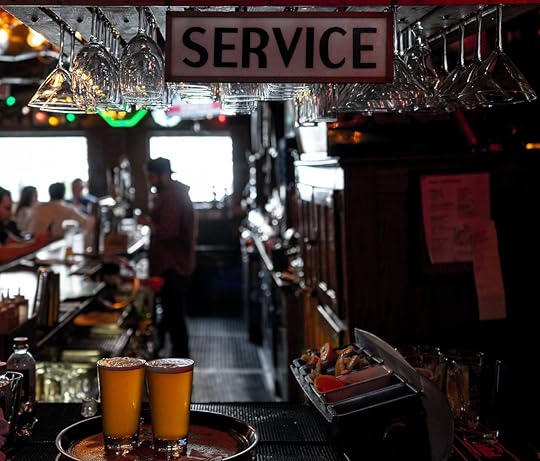
Photo: Green Door/Facebook
The Green Door is one of the oldest surviving buildings in Chicago, first erected in 1871 after the Great Chicago Fire. When it eventually became a bar, its name took on a special significance: During Prohibition, a green door often signified that the building housed a speakeasy. Supposedly, one of Al Capone’s great rivals in the bootlegging business, the Irish mobster Dean O’Banion (an avid florist who, according to legend, was a shot while cutting his chrysanthemums), frequented the Green Door.
Where: 678 N Orleans St, Chicago, IL 60654
2. Anchor Bar — Detroit, Michigan

Photo: The Anchor Bar/Facebook
Though it’s now rebranded as a shiny sports bar, Anchor Bar was once the go-to hang out for journalists, judges, and police officers. More disreputable types frequented the joint as well; Charles “Chickie” Sherman, a notorious Detroit bookie, used the Anchor Bar as his headquarters. He and fellow wannabe-mobster “Good Looking Solly” Shindel ran a sports gambling business under the watchful eye of the Giacalone brothers, who were the real deal (both men were suspects in the infamous disappearence and murder of union leader Jimmy Hoffa). In 1971, the Feds broke up Sherman’s gambling ring, and Shindel was murdered soon after.
Where: 450 W Fort St, Detroit, MI 48226
3. Dino’s Bar — Las Vegas, Nevada
This classic dive is the self-proclaimed “last neighborhood bar in Las Vegas.” Fifty years ago, Rinaldo “Dino” Bartolomucci bought the club from infamous mobster Eddie Trascher back when it was known as Ringside Liquors. According to legend, Trascher ran illegal gambling out of the bar and installed spikes behind the wall where an especially troublesome customer tried to punch a hole. Trascher relocated to Florida, where he made a living as a bookie until he eventually became an FBI informant against organized crime bosses.
Where: 1516 S Las Vegas Blvd, Las Vegas, NV 89104
4. William Barnacle Tavern — Manhattan, New York
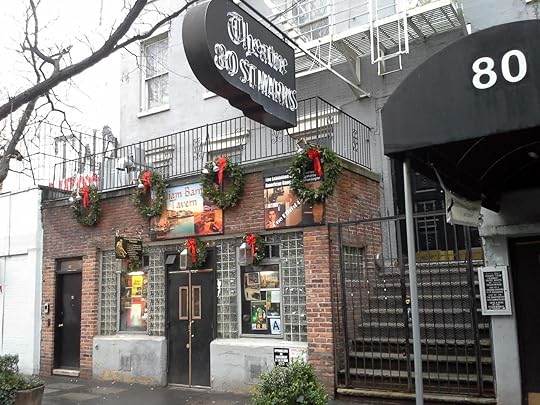
Photo: William Barnacle Tavern/Facebook
In 1922, a bootlegger named Frank Hoffman bought the building that the William Barnacle Tavern, and adjoining theater, now occupies. Hoffman turned it into a speakeasy called Scheib’s Place. His associate, Walter Scheib, a mafia foot soldier, ran the nightclub. Police officers who were willing to look the other way enjoyed the jazz band alongside gangsters like Al Capone. Hoffman, eager to avoid being arrested for tax evasion, supposedly kept $12 million dollars (the equivalent of more than $175 million today) in a safe upstairs. He disappeared when Prohibition ended and Scheib kept running the now-legal club, but in 1964, he sold the building to Howard Otway. Otway found two safes in the cellar of his new building — one empty, and one filled with a headshot of a showgirl and $2 million (around $16 million today). What happened to the other $10 million? Rumor has it that Hoffman snuck back in unbeknownst to anyone and took back some of his cash. We’ll never know the truth, because Hoffman was never heard from again. Otway’s son now owns the building.
Where: 80 St Marks Pl, New York, NY 10003
5. Club Lucky — Chicago, Illinois

Photo: Club Lucky/Facebook
This historic Chicago Italian restaurant and cocktail lounge has a rich mobster history. The building was once the site of a speakeasy, and there are still bullet holes behind the bar. In the late ‘20s, a hardware store and a Polish social club occupied the Club Lucky building. The hardware store housed illicitly purchased liquor in the basement, which it then passed through a hole in the wall to the social club. One more piece of mob adjacent history: Police discovered the getaway car used by Al Capone and his cronies after the Valentine’s Day Massacre in a garage just a couple of doors down from Club Lucky.
Where: 1824 W Wabansia Ave, Chicago, IL 60622
6. KGB Bar/Red Room — Manhattan, New York
Today, KGB Bar on New York City’s Lower East Side is a well-known gathering place for writers and literary figures. The bar regularly hosts readings and publishes a literary magazine. However the Red Room, a semi-secret event space and speakeasy above KGB, takes inspiration from the building’s mafia-related history. Before it became the Red Room, Lucky Luciano ran a speakeasy, casino, and brothel called Palm Court in the space.
Where: 85 E 4th St, New York, NY 10003
7. The Flamingo — Las Vegas, Nevada

Photo: Jason Patrick Ross/Shutterstock
Before his grisly demise, Bugsy Siegel was one of the most revered and feared mobsters in America — he also had a direct hand in the development of the Las Vegas Strip. In 1945, he bought The Flamingo casino and hotel, hoping to build a gambling empire. The casino (but not the hotel) opened with great fanfare in December 1946, and even Clark Gable showed up to the party. Nevertheless, it was a flop and closed two weeks later. In 1947, it opened again, this time under the moniker the Famous Flamingo, but business still struggled and Siegel’s mob bosses took this as a sign that he was skimming a cut of the profits for himself. Even worse, Siegel had borrowed money from a fellow mobster, Lucky Luciano, who wanted his money back. He had wronged one too many dangerous people, and was shot to death in his home on June 20, 1947. The Flamingo is still very much open to anyone who wants to sip a drink and play the slot machines. Just look for the dazzling pink marquee shaped like a fan of flamingo feathers.
Where: 3555 S Las Vegas Blvd, Las Vegas, NV 89109
8. The Back Room — Manhattan, New York
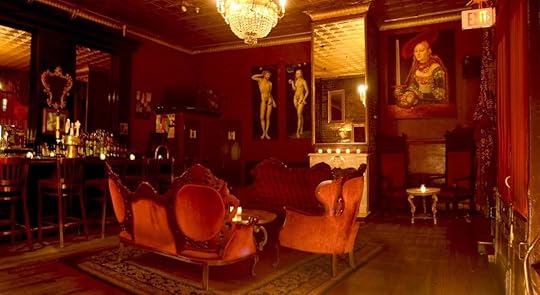
Photo: The Back Room/Facebook
A hidden door in an alleyway (look for the sign that reads Lower East Side Toy Company), low lighting, and red velvet furniture: If you’re looking for a true New York City speakeasy experience, you’ll find it at The Back Room. It’s not a complete act, either. Bugsy Siegel and Meyer Lansky were both regulars at The Back Room, back when it was known as Ratner’s Back Room. The pair held meetings behind a secret bookcase. Mobsters apparently loved to meet there because there were so many exits onto the street.
Where: 102 Norfolk St, New York, NY 10002
9. Cafe Martorano — Fort Lauderdale, Florida
Technically, Cafe Martorano is an Italian restaurant. Yet it boasts a vibrant nightlife scene, and has strong present-day connections to the last remaining elements of the mafia. The owner and chef is Steve Martorano, nephew of alleged mobster and Philadelphia native Raymond “Long John” Martorano. Long John supposedly worked with Nicky Scarfo, a boss in the Philadelphia crime family. Unfortunately, Martorano was killed outside of his doctor’s office in 2002, but his nephew Steve is making a better name for his family with his restaurants. Palm Beach papers still circulate rumors that maybe-mobsters frequent his establishments, though.
Where: 3343 E Oakland Park Blvd, Fort Lauderdale, FL 33308
10. Champagnes Cafe — Las Vegas, Nevada
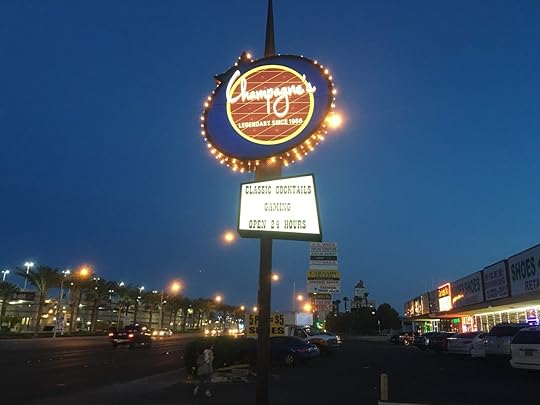
Photo: Champagnes/Facebook
Champagnes Cafe (or is it Champagne’s? Its apostrophe use is inconsistent), is a run-down dive these days (the situation became so dire that Bar Rescue featured Champagnes on one episode). At its height, though, Tony “The Ant” Spilotro was sent to Vegas to oversee the business of the Chicago mob on the Strip and held court there. These days the bar is a legendary Vegas karaoke spot, and still a favorite haunt of seasoned locals.
Where: 3557 S Maryland Pkwy, Las Vegas, NV 89169
11. Stonewall Inn — Manhattan, New York
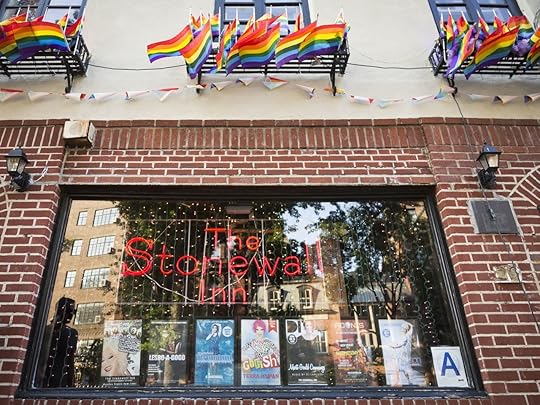
Photo: Glynnis Jones/Shutterstock
The Stonewall Inn in New York City is best known as the site of the Stonewall Riots, a demonstration by LGBTQ people against police violence which had, for too long, terrorized their communities. However, the bar has another, lesser-known history: It was once controlled by the Genovese crime family, which operated out of Greenwich Village. Matty “the Horse” Ianniello ran the operation that kept the Stonewall Inn open by bribing police officers with thousands of dollars during a time when even kissing another man in public was considered “disorderly conduct.” The mob turned out to be bad landlords. The bar had no liquor license, no fire exits, and the glasses were cleaned with dirty water. Following the Stonewall Riots, the mob closed down the bar and it wouldn’t reopen in its original incarnation again until 2007.
Where: 53 Christopher St, New York, NY 10014
12. Via Veneto — Chicago, Illinois
Before it became an Italian restaurant and event space, Via Veneto was known as Room 21, the largest of Al Capone’s speakeasies in Chicago. In his battle to enforce Prohibition, Eliot Ness seized around 200,000 gallons of alcohol at Room 21. Tunnels found underneath the building by a former owner seem to suggest that the mobster frequently smuggled booze through the speakeasy.
Where: 6340 Lincoln Ave, Chicago, IL 60659
13. Green Mill Lounge — Chicago, Illinois

Photo: Pamela Brick/Shutterstock
Not to be confused with the Green Door, Tom Chamale purchased this bar in 1910 and named it the Green Mill Gardens. But when Prohibition hit, he quickly turned the lease over to the mob. The speakeasy and jazz club became a favorite hangout of Al Capone. He even had his own booth in the bar with a clear view of the front and back doors. One legend says that the volatile mobster ordered one of his underlings to murder the club’s singer when he tried to perform at a competing bar. Another legend is that Capone would sometimes escape the bar using a trapdoor and underground tunnels. While both exist, they were probably only used to smuggle booze.
Where: 4802 N Broadway, Chicago, IL 60640
14. Exchequer Restaurant and Pub — Chicago, Illinois
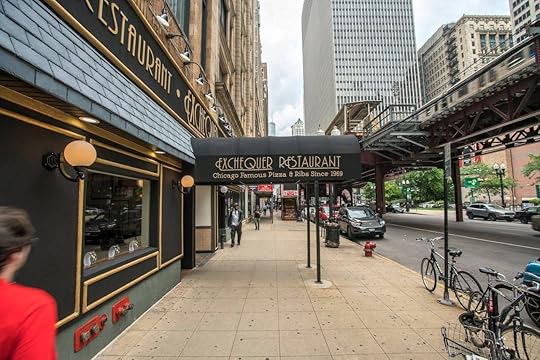
Photo: Exchequer Restaurant & Pub/Facebook
Al Capone ran this speakeasy, then known as 226 Club, in the 1920s. There were no secret passageways, hidden doorways, or revolving books cases. 226 Club brazenly served alcohol by pouring drinks in tea and coffee cups for customers. A brothel operated upstairs, where a picture of Capone hung on the wall. The club went through a few more owners until it became the Exchequer restaurant in 1982.
Where: 226 S Wabash Ave, Chicago, IL 60604
15. Bánh Mì & Bottles — Philadelphia, Pennsylvania
The building that is now home to Bánh Mì & Bottles, a bar and Vietnamese restaurant, has a complicated history. It was once the site of the Mars Restaurant, a discreet meeting place for a crew of mobsters including Nicky Scarfo. Arthur Pelullo, an associate of Scarfo’s who eventually landed in jail for extortion, owned the restaurant. Scarfo ate there so regularly that he likely enjoyed his last meal at the Mars before heading to prison in 1987, where he died in 2017. Since the late ’80s, the building has changed hands many times, existing as a cantina and seafood restaurant before Bánh Mì & Bottles opened.
Where: 712-14 South St, Philadelphia, PA 19147
16. Bomb Bomb Restaurant — Philadelphia, Pennsylvania
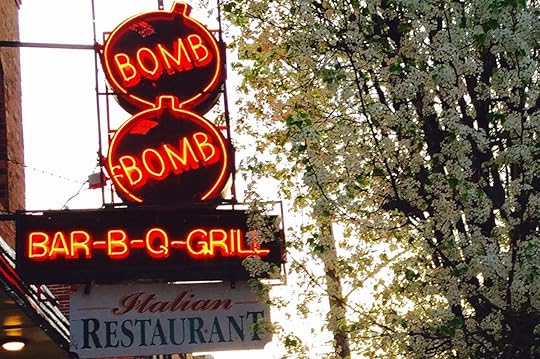
Photo: Bomb Bomb Restaurant
This barbecue restaurant takes its new name from a slice of disturbing mob-related history: A man named Vincent Margarite opened the taphouse as a space friendly to the local Italian community in Philadelphia. The brazen move angered local thugs, who thought they had a monopoly on the bar business, and in February 1936, they set off a bomb on the bar’s front doorstep. Margarite opened back up a day later, but the mob kept coming for him: They bombed his bar again in April. Worried for the safety of families in the area, Margarite sold the bar and it became a tavern nicknamed the “bomb bomb.” The name became official in 1951.
Where: 1026 Wolf St, Philadelphia, PA 19148
17. Shaker’s Cigar Bar — Milwaukee, Wisconsin
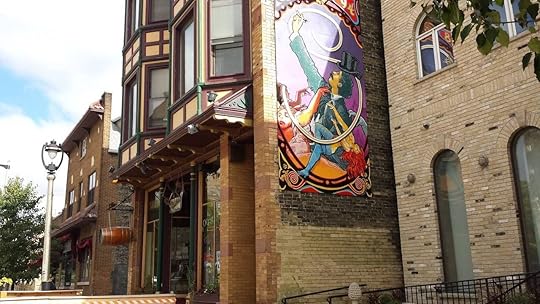
Photo: shakers cigar bar/Facebook
Al Capone once owned Shaker’s Cigar Bar in Milwaukee, considered the most haunted bar in the state. In 1924, the mafia took control of the building, and called it a “soda bottling operation” to appease the authorities. Of course, Capone had really transformed the building into a brothel and a speakeasy, which operated until 1946.
Where: 422 S 2nd St, Milwaukee, WI 53204 

More like this: 14 most notorious mafias in the world
The post 17 mobster and mafia bars you can still drink at appeared first on Matador Network.

MacBook Pros banned from planes

If your MacBook Pro has been recalled by Apple for a battery hazard, you might not be able to take it on a plane.
According to Apple, some 15-inch MacBook Pros sold between September 2015 and February 2017 have batteries that may overheat and pose a fire safety risk. The US Federal Aviation Administration has alerted major US airlines about the recall. This means the affected laptops are not allowed on flights as either cargo or carry-on baggage.
The European Union Aviation Safety Agency issued a similar warning earlier this month, urging airlines to crack down on travelers carrying the recalled MacBook Pros. The warning explains that, “If such a device is taken on board, the passenger is required to keep it switched off and not use or charge the device.” Passengers should also note that they need to inform cabin crew immediately when a device is damaged, hot, produces smoke, is lost, or falls into the seat structure.
About 432,000 of these laptops were sold in the US, and would be subject to the ban. If you do own one of the affected 15-inch MacBook Pros, you can get your battery replaced free of charge and jet off with your laptop again. Just check the serial number via Apple’s recall announcement page to know if your device is part of the recall. 

More like this: 10 things you can and can’t take through the US border
The post The US Federal Aviation Administration is banning this MacBook Pro from planes appeared first on Matador Network.

How to take your toddler traveling
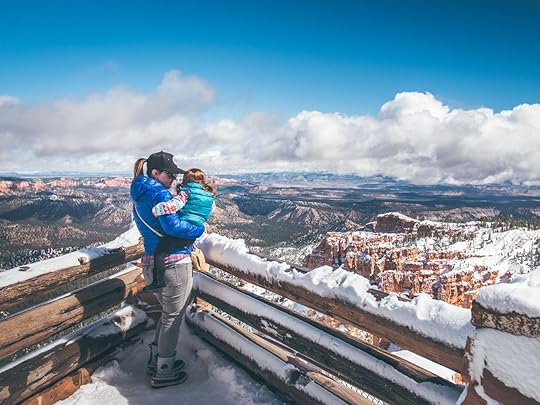
Wild Toddler Chronicles is an original short documentary series from Matador Network that follows a pair of outdoorsy parents as they introduce their two-year-old to wild natural surroundings, all in the hopes of accomplishing two things — instilling in their daughter a love of the outdoors and an understanding of why it’s so important to protect it. It gets real — the struggles, the triumphs, the bodily fluids. A story in three chapters, this project documents their ongoing quest to expose her to the beauty of the world’s wild places and allow her to experience the healing and formative power of the natural world. Filmmaker and #dadofnature Brian Lewis shared some insight on what happened behind the scenes and what it took to bring this series to life.
I’m sure there were plenty of inspiring, and probably humorous, moments in the process of filming these videos. What were some of the highlights that we didn’t see on camera?
A few of the highlights involve Kaiya doing something unexpected to help during a tough moment. One example is when we got to our campsite in Zion and realized that we’d left an important bag in the parking lot at a gas station about an hour earlier. We had stopped in a panic because Kaiya had been having diarrhea and we needed to get her cleaned up in the bathroom. Throwing away yet another pair of underwear, we hurried to finish up the drive before the next blowout, not realizing that we left a bag with all of her snacks, some toys, and her absolute favorite “neigh jacket” — a fleece she’d worn on all of our adventures pretty much since she’d been born.
Realizing what we’d done, we were devastated and angry with ourselves for making such a stupid mistake. Calls to the gas station were no help and Pam started to cry when explaining to Kaiya that her jacket and all this stuff were gone forever. We could see Kaiya processing what had happened and noticing her mom’s tears. I was prepared for a full meltdown, but instead of getting upset, she hugged her mom’s leg and calmly said, “It’s okay Mommy, it happens.”
It was probably the most mature thing a two-year-old has ever said and it helped recenter us on what’s actually important and why we’re doing this in the first place.
How about frustrating moments?
Plenty. The biggest challenge with this project was trying to shoot footage and be a parent, often simultaneously. Being a parent sometimes called for helping my wife clean up the vomit, but being a filmmaker called for capturing footage of an intense and realistic moment of toddler travel.
One of the main frustrations on this trip was that Kaiya was sick for most of it. She had some stomach issues and there was a lot of action involving different bodily fluids. She had some great moments where she’d seem fine, but for the most part, she was exhausted and just wasn’t herself. There was one moment that was kind of a breaking point. We were on the rim at Bryce Canyon at sunrise with fresh snow coating the hoodoos and an ethereal fog hanging in the canyon. It was stunningly beautiful and I tried to work quickly while the light was perfect, frantically trying to direct her until she just sat down in the middle of the trail and with a voice of total exasperation, said, “Daddy, no more pictures.” That’s when I put the camera away.
How old was your daughter when you first took her camping?
She was just over three months old when my wife surprised me by planning a Father’s Day camping trip.
Anything in particular that your daughter has really taken to in the outdoors? Do you see her as an avid camper in the future? A hiker?
Right now, she’s psyched on anything that involves splashing in water. By far her favorite activity is throwing rocks in any available body of water. We’re not super focused on directing her towards a specific activity — our main motivation is making sure she’s comfortable with being in nature, away from screens and plastic toys, happy getting dirty, and adapting to different routines and environments.
What advice do you have regarding trip planning with a toddler? How did you plan, pack for, and execute these excursions?
Take the itinerary you’d plan on a pre-kid outing and cut it in half. Then take the gear you’d bring on a pre-kid outing and double it. But most importantly, be flexible and maintain your expectations. For us, every outing is different…sometimes she’ll run down the trail on her own, other days are struggles of constant motivation and complaints of tired legs and wanting to be carried. It’s impossible to know which way it will go when you head out the door.
Regarding conservation, you made a poignant point about the need to protect our natural landscapes for future generations. In addition to getting out there and experiencing them, what else can parents do to instill in their kids a mindset of conservation?
For sure one of the most important ways to instill this mindset is to spend time in these places and as much as your life allows, make them part of your routine. And it doesn’t have to be anything extreme or inaccessible — a local hiking trail or city park or backyard garden can instill the same respect for nature as any epic national park.
Another thing we’ve been doing is slowly introducing some of the Leave No Trace concepts just to get her started on the path to recreating responsibly and minimizing our impacts on the land. Right now we’re working on simple concepts and explanations in kid terms — things like keeping a clean camp “so animals don’t get sick from our food,” staying on the trail “so we don’t hurt the flowers,” and picking up trash when we see it. There’s nothing cuter than Kaiya interrupting our hike in a panic by pointing to a food wrapper and shouting “Oh no! Someone’s not being bear aware!”
Watch part three of the Wild Toddler Chronicles below, which focuses on leaving a legacy of conservation behind by teaching kids to care about nature, or catch up on episodes one and two. 

More like this: Why you need to take that epic trip with your toddler
The post What it’s really like to take your toddler on a camping adventure appeared first on Matador Network.

Traditional Bhutanese dishes

A meal at a Bhutanese restaurant may give you the impression that Bhutan’s cuisine is built on two elements: rice and chili. Because of Bhutan’s high altitude and rough terrain, traditional Bhutanese food is based around a small list of ingredients. The most common are rice, chili, yak meat, and dairy. These ingredients are used in a long list of rustic, rich, and hearty dishes that are especially nourishing in Bhutan’s cold winters.
A traditional Bhutanese meal is communal. Various dishes are served in wooden bowls and shared among family and friends. Although metal cutlery and chopsticks are regularly used in the city and in restaurants, it’s not unusual for people to eat with their hands in intimate settings. Simply squeeze a lump of rice into a ball, pick up a piece of meat or a vegetable, and eat the whole thing in one bite. To finish off the meal, wipe any sauce or juice left on your plate with a handful of rice.
Whether using cutlery or your hands, these are the iconic Bhutanese dishes to expect in a traditional meal.
Ema datshi

Photo: bonchan/Shutterstock
Ema datshi is coarsely chopped chili (ema) and cheese (datshi). It’s Bhutan’s national dish. You can find it in almost any local restaurant, but no two plates of ema datshi are the same. Chilis of all kinds can be used in the dish — green or red, dried or fresh — with a wide variety of meatiness and spiciness. The chilis are chopped, deseeded, and simmered with a sauce made from curdy fresh cheese and spiced with garlic, cilantro, or a touch of tomato. Some cooks serve ema datshi saucy and runny, while others reduce it to a gooey, creamy, almost stretchy melt, like the mozzarella on pizza. The cheese may be made from yak milk, which gives the dish a pleasantly pungent aftertaste.
In addition to cooking methods, there are other variations to this iconic dish. Restaurants and home cooks sometimes swap chili with mushrooms, thinly sliced potatoes, or green beans. No matter how it is made, ema datshi is always eaten with a lot of rice.
Shakam paa
Bhutan is Buddist, but Bhutanese enjoy eating meat (butchery is outsourced to neighboring countries). The country’s cold climate makes it easy to air-dry and preserve meat for consumption year-round. A typical dish made with dried beef is shakam paa. The dish is made with thin strips of dried beef stir-fried with sliced radish and a generous amount of dry chili. Cooks can mix up the recipe by using yak butter or by coating the meat with cheese sauce, just like in ema datshi. Fresh pork or fatty dried bacon is sometimes used instead of dried meat. Whatever the meat choice, dry chili is a must for the recipe.
Another more popular meat is yak. Yaks have been an integral part of Himalayan agriculture for hundreds of years. Today, even urban households make their own yak jerky by drying fresh yak meat on rooftops. Yak is leaner and tougher than beef, so it has to be chewed slowly and thoroughly to get the delicate flavor out. The fat slowly seeps out from the muscle tissues, leaving a buttery and pleasantly gamey fragrance in your mouth.
Fresh and hard cheese
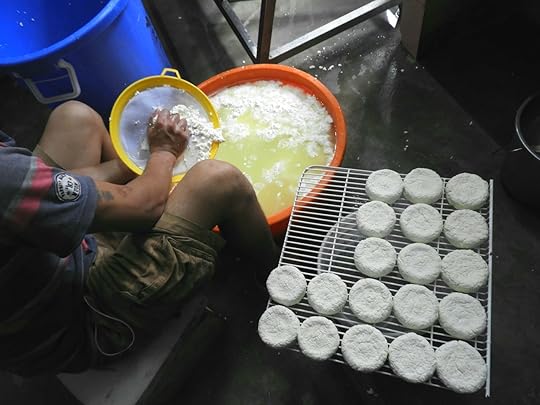
Photo: Inside_bhutan/Shutterstock
Cheese is ubiquitous in Bhutanese food, the most common being the fresh cheese used for ema datshi. It’s produced by heating and clotting buttermilk, and has a tender texture and mild taste similar to cottage cheese. Datshi is can be added to meat dishes, folded in sweet and savory pastries, or tossed into refreshing salads. Mix small lumps of cheese with crunchy vegetable cubes, and dress the salad with lime juice. Don’t forget to throw in a pinch of chopped fresh chili to spice up the taste.
A hardened variety of datshi is called churpi. You can see garlands of churpi cubes hanging outside grocery stores. This cheese is made from yak’s milk, pressed with heavy stones, and air-dried until rock-hard. It has a grainy texture and subtly sweet flavor. To eat it, soak it in water overnight, pop one into your mouth, and gnaw on it for hours. Due to its high protein content and inoffensive taste, it’s an ideal tidbit for hikers and herdsmen at high altitudes.
Momo

Photo: Pikoso.kz/Shutterstock
Momos are steamed dumplings. They are believed to be of Tibetan origin and are eaten as a snack or side dish in Bhutan. Lean ground meat is mixed with onion and garlic, and then wrapped in thin wrappers made from either wheat or buckwheat flour. After, they are shaped into round or crescent-like pouches and sealed with dense, beautiful pleats. Momos are often compared to the Chinese dumplings called jiaozi, but their taste is meatier and the texture denser due to having more meat and spice than vegetables.
In Bhutan, momos with beef or yak meat are the most common. Some eateries serve momos with cheese or vegetable fillings. The best way to eat a momo is to dip it in ezay, a chili paste that locals put in almost every dish and sometimes eat straight with plain rice. 

More like this: Why you should visit Bhutan to experience its people — not just its mountains
The post A traditional, communal Bhutanese meal means sharing all these amazing dishes appeared first on Matador Network.

Matador Network's Blog
- Matador Network's profile
- 6 followers



